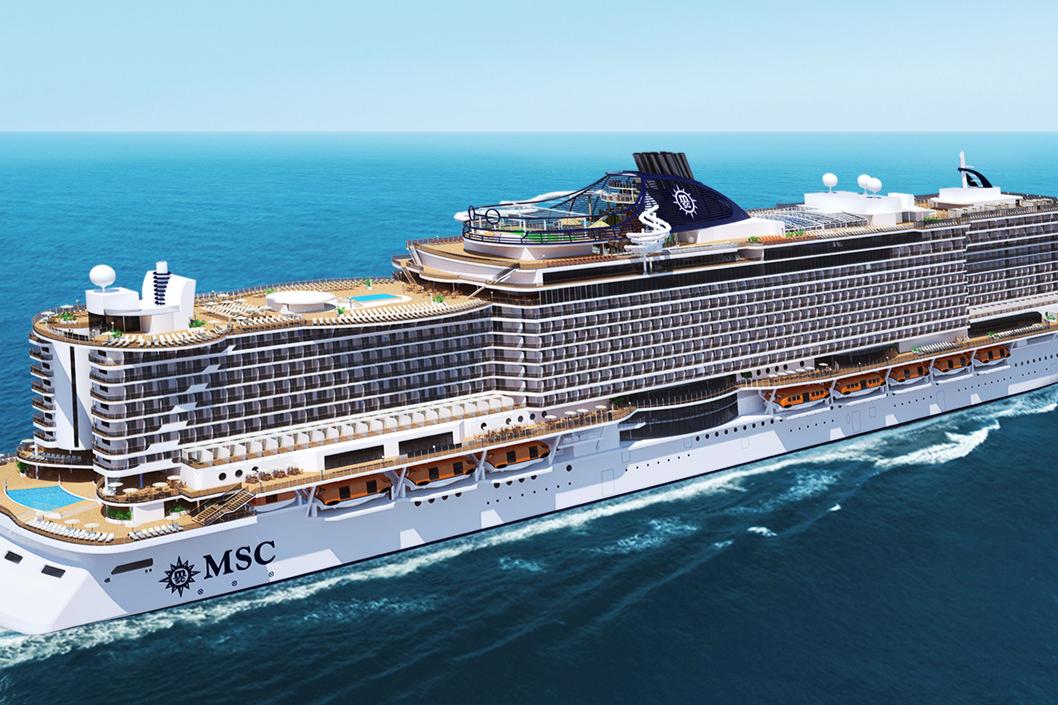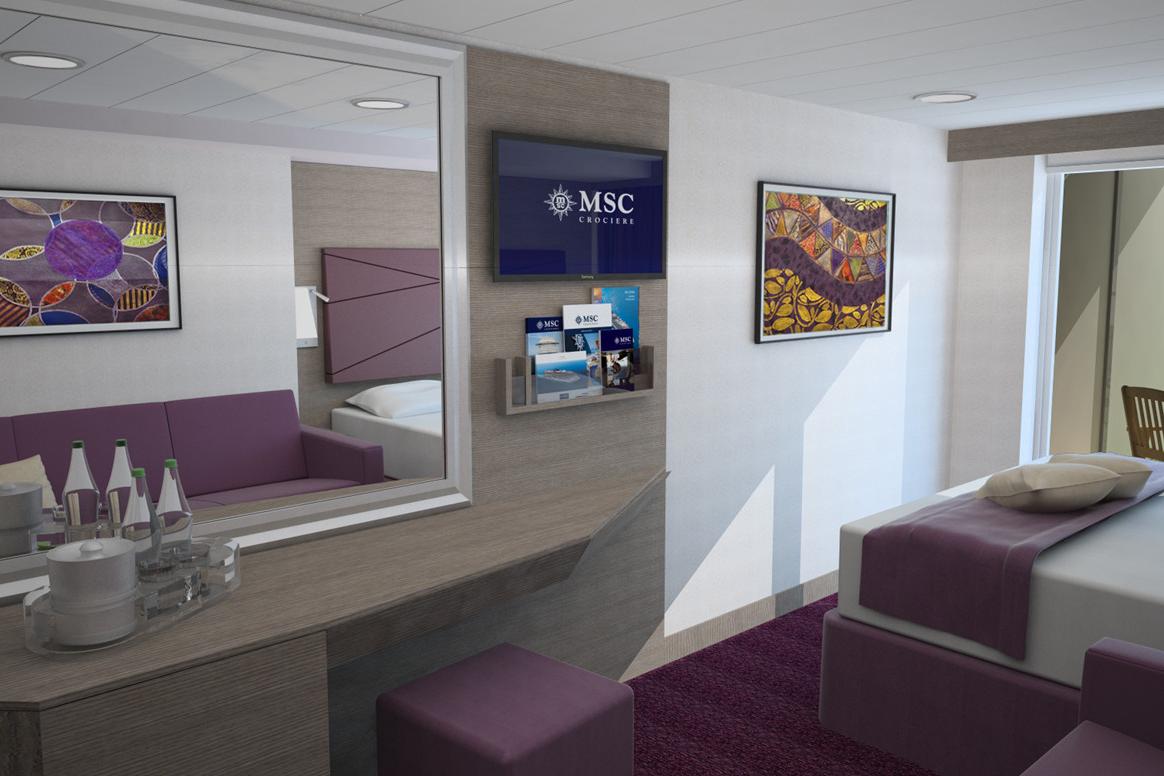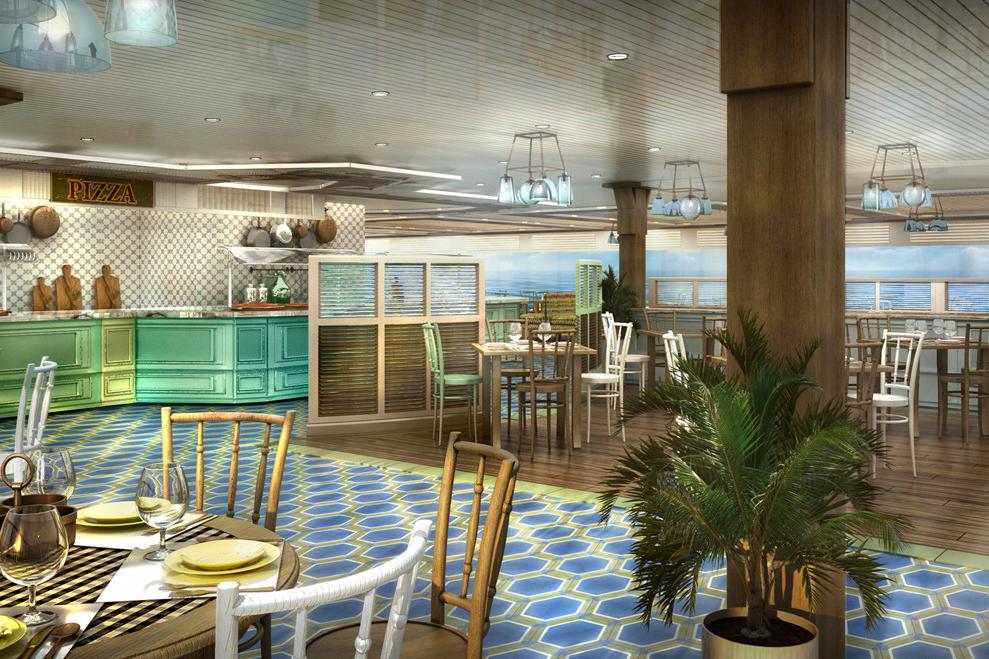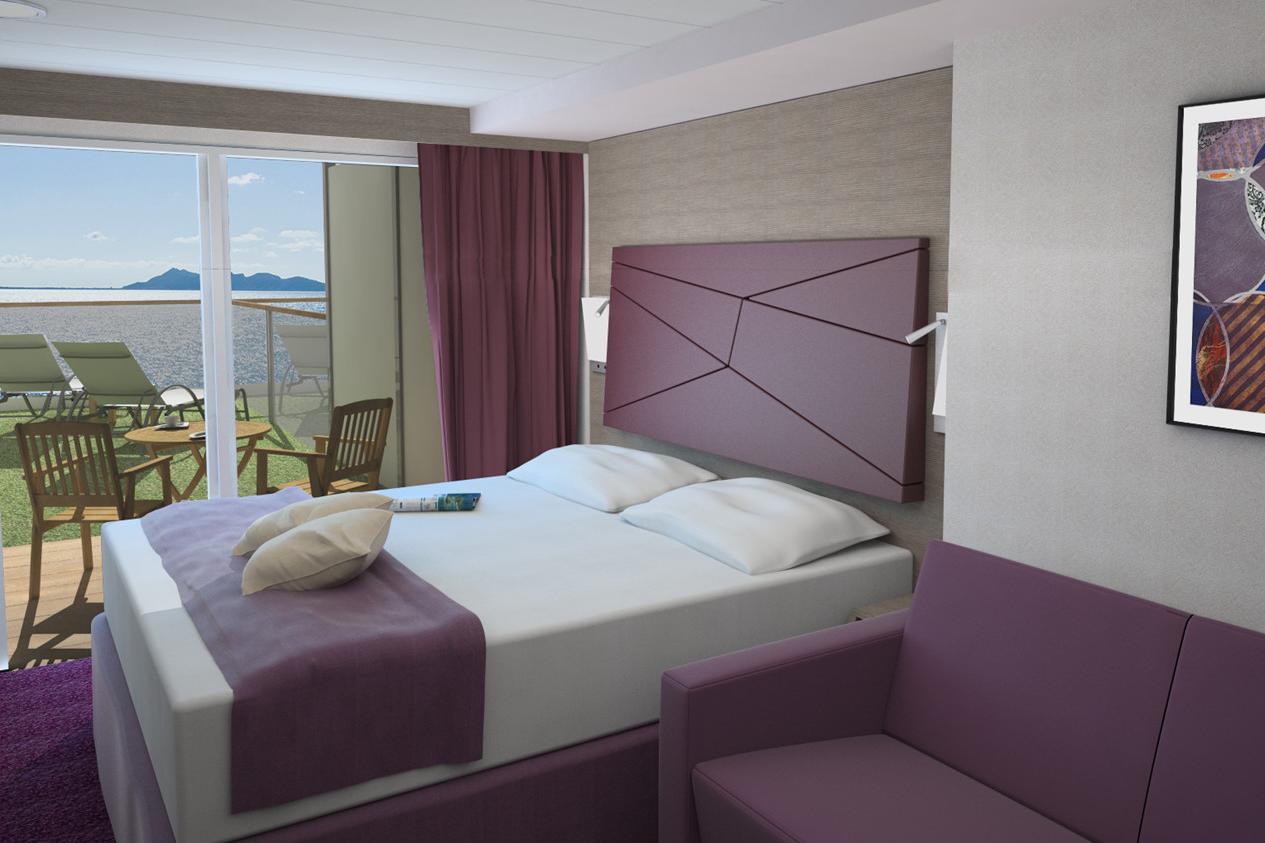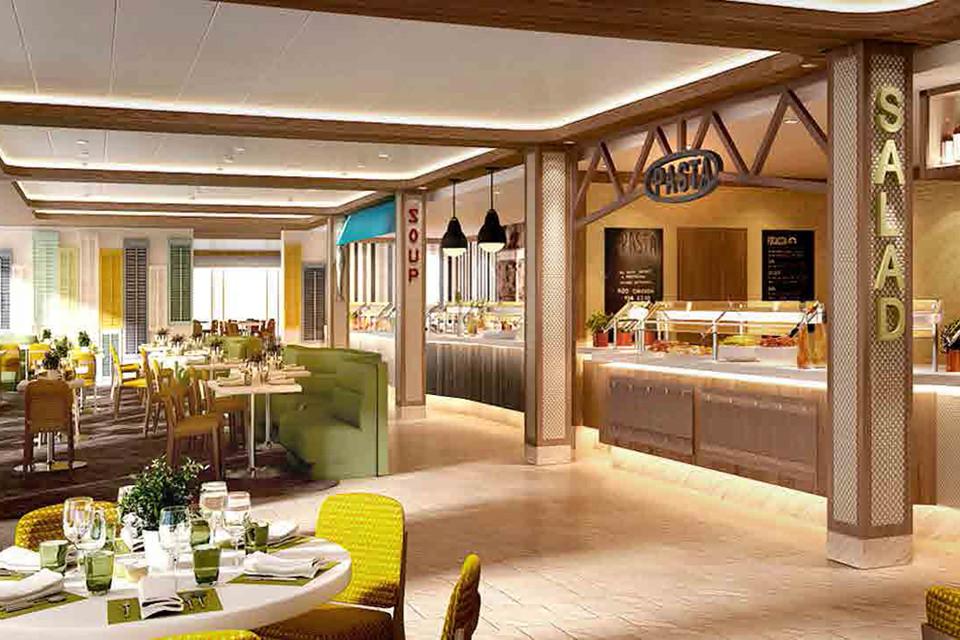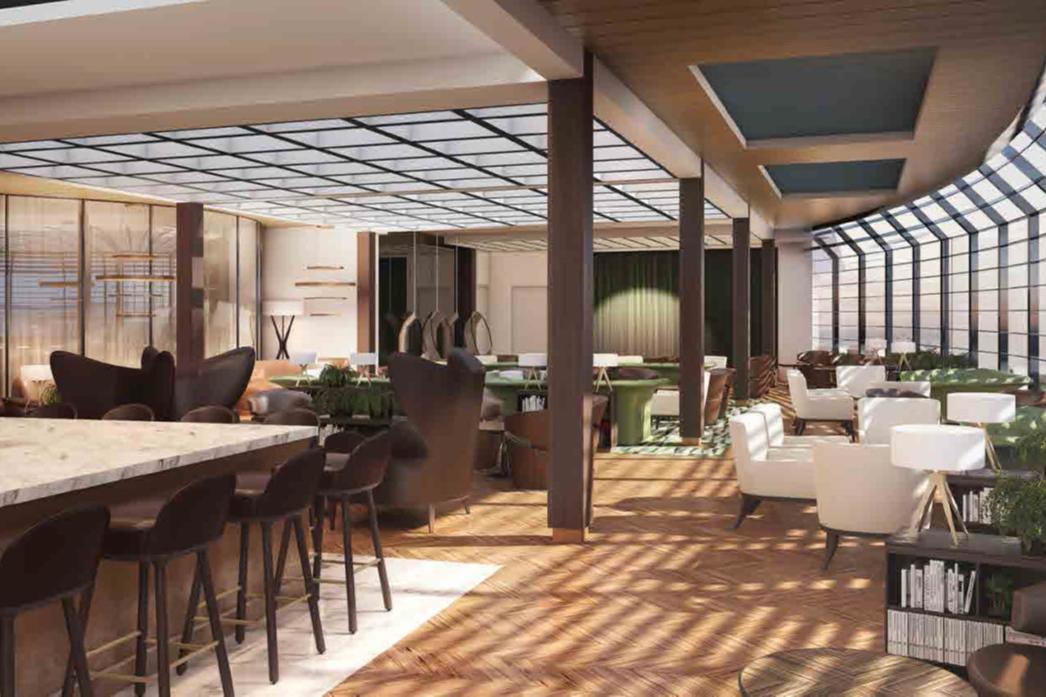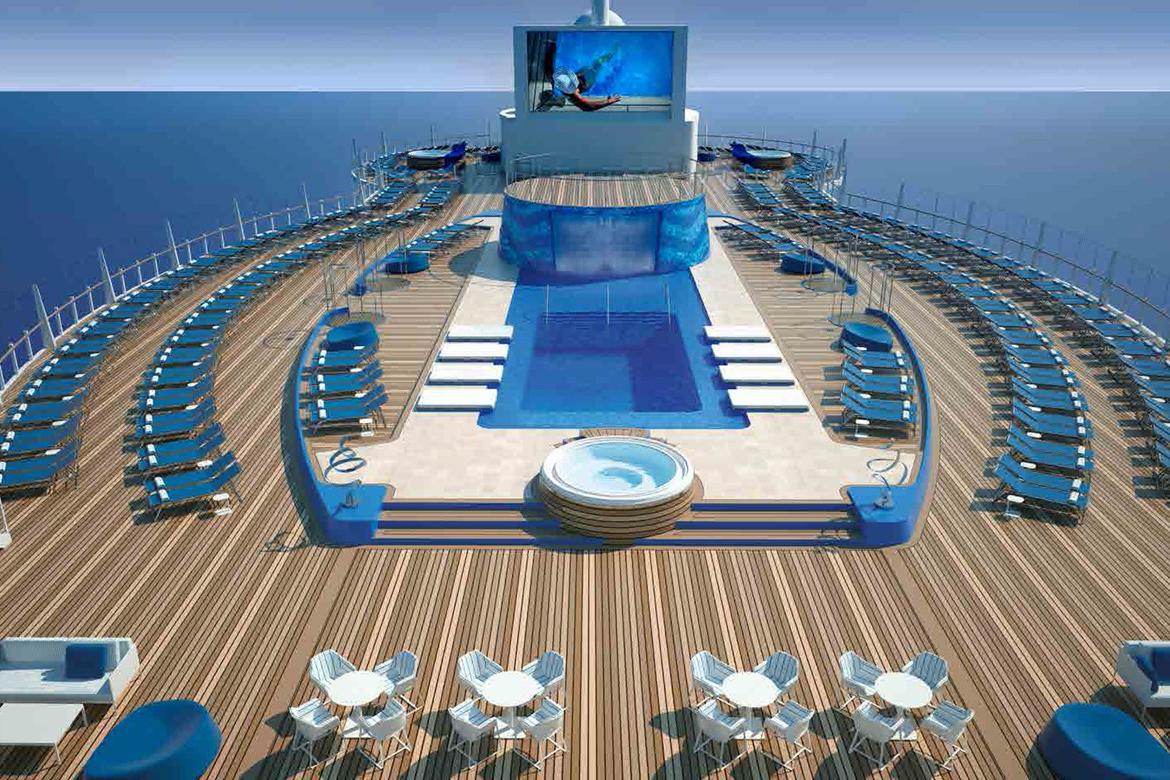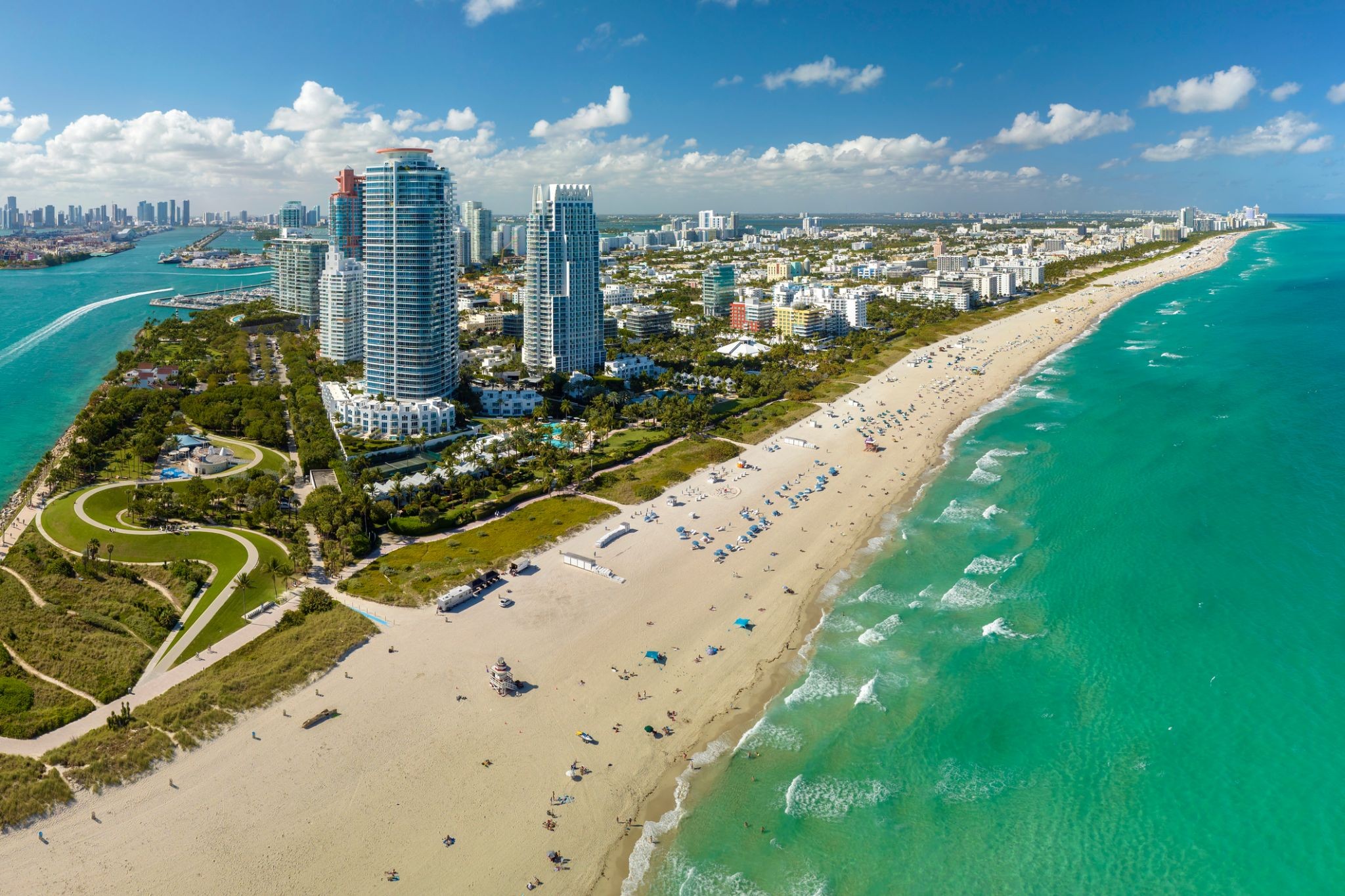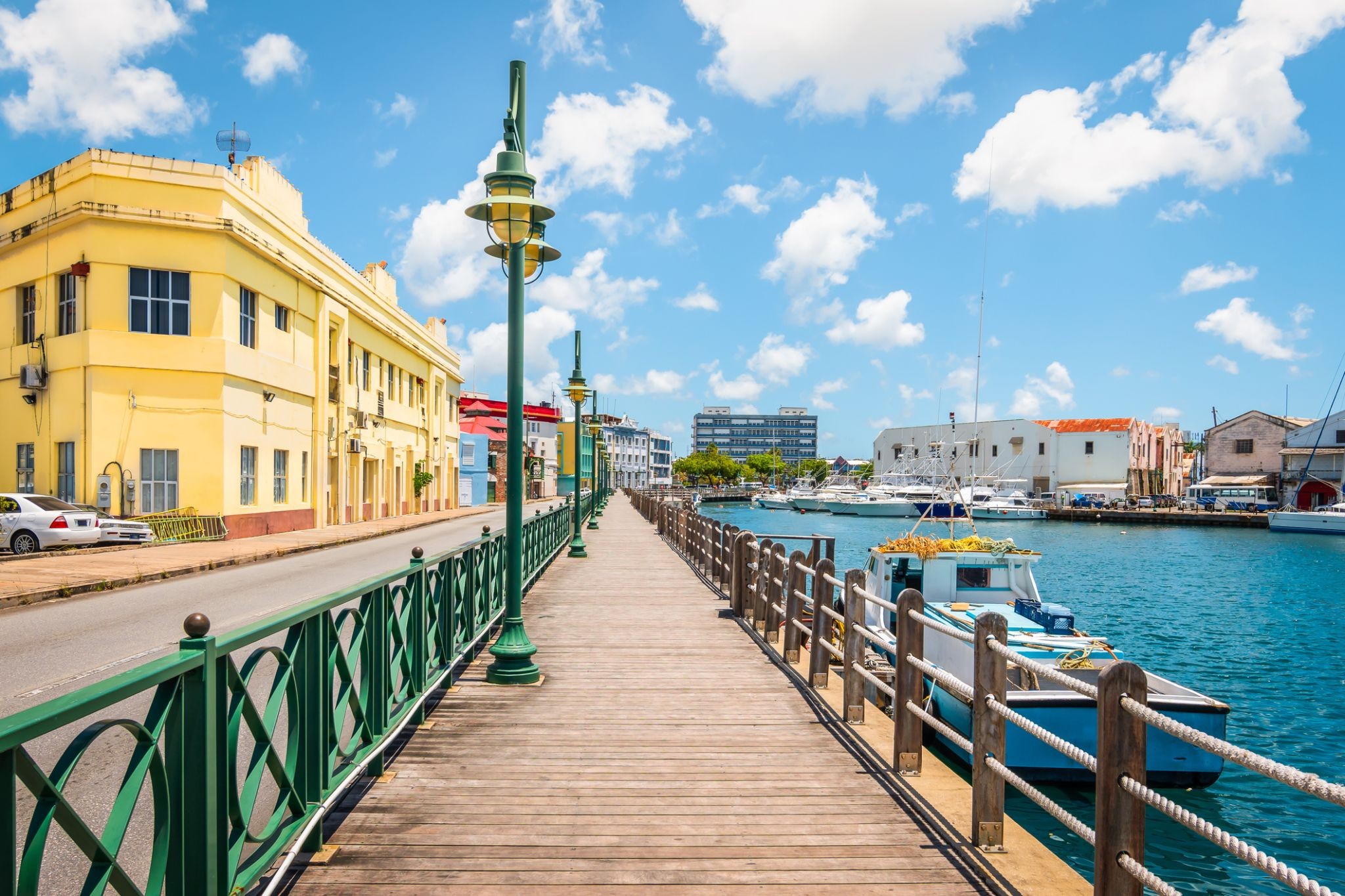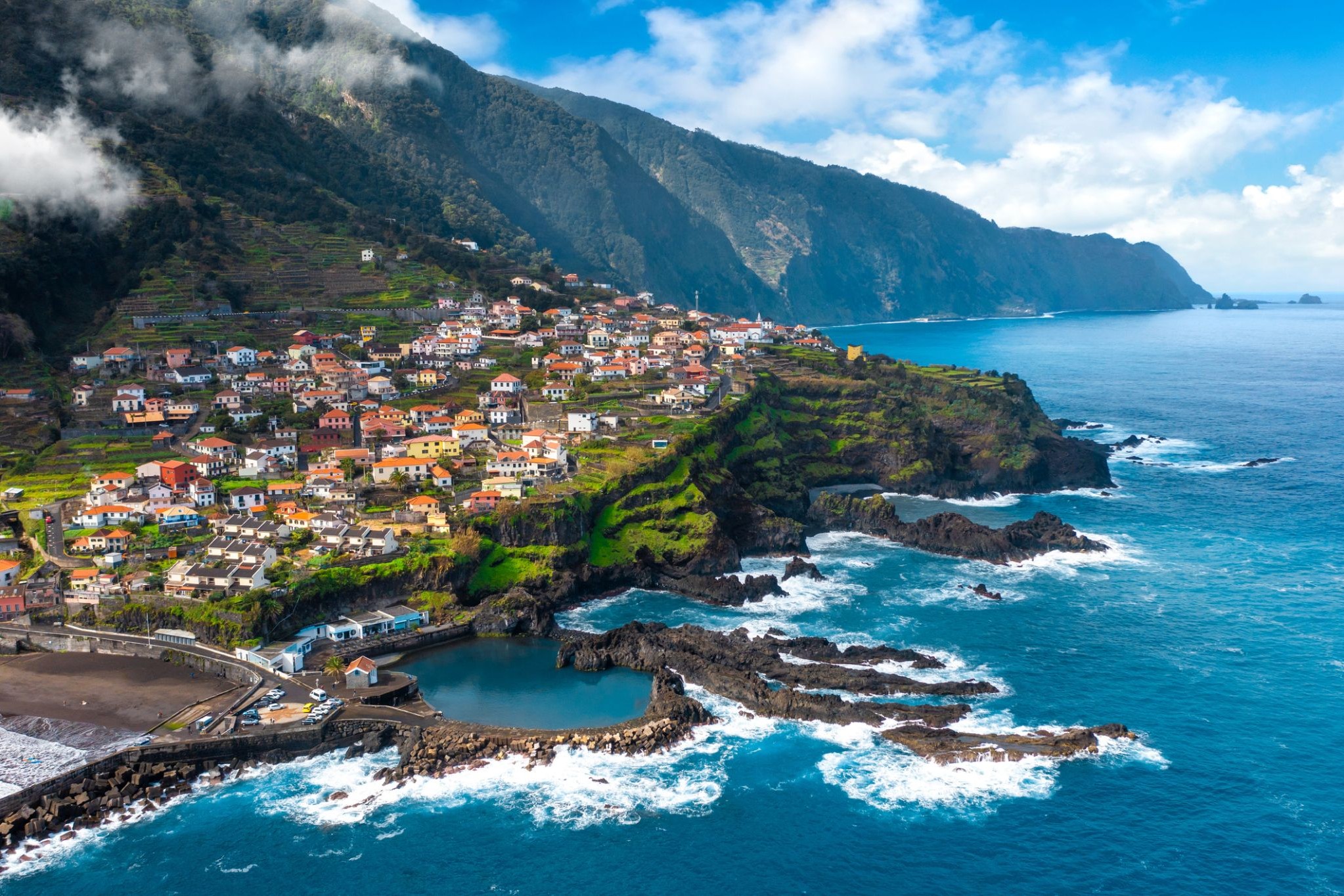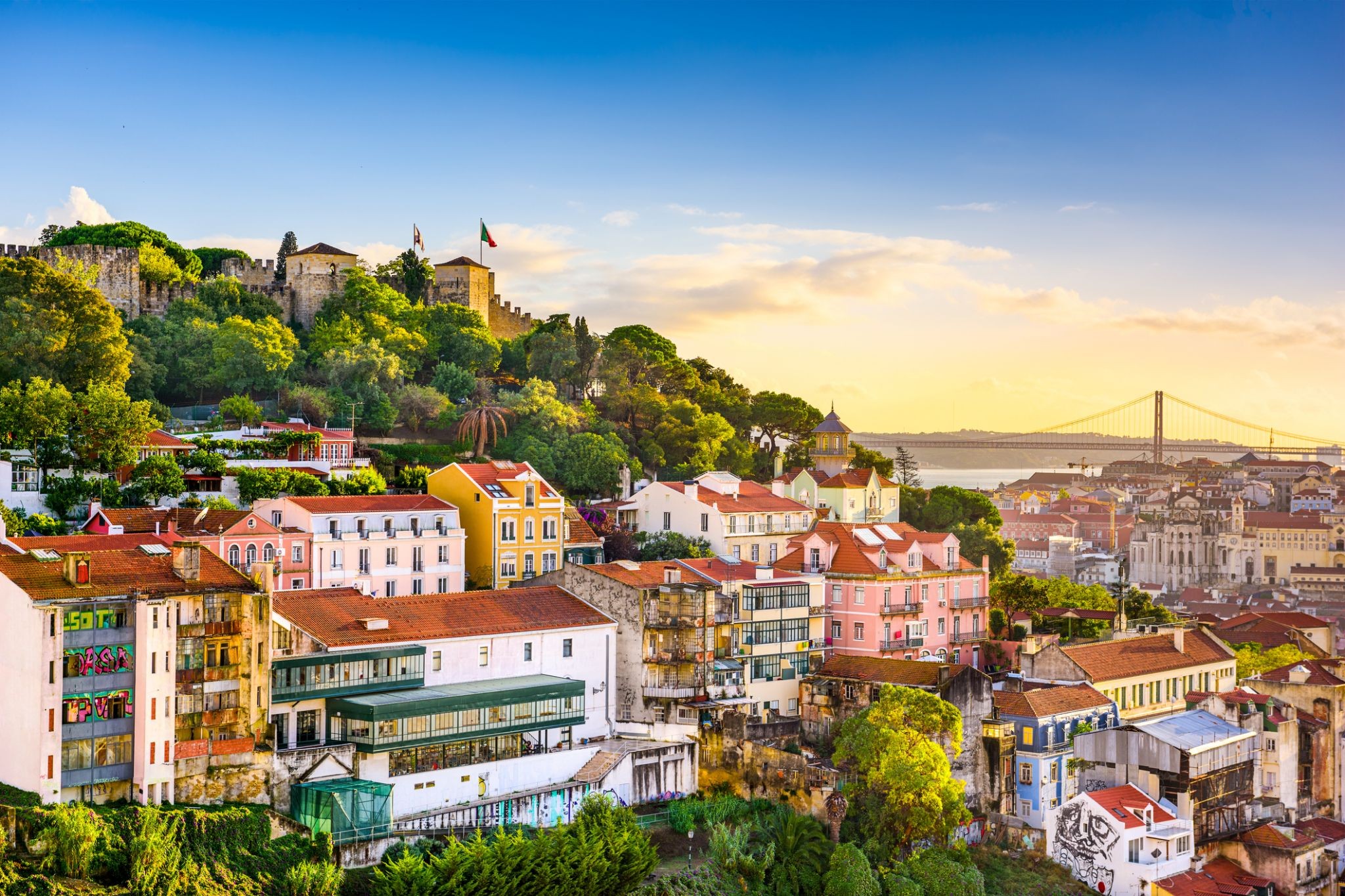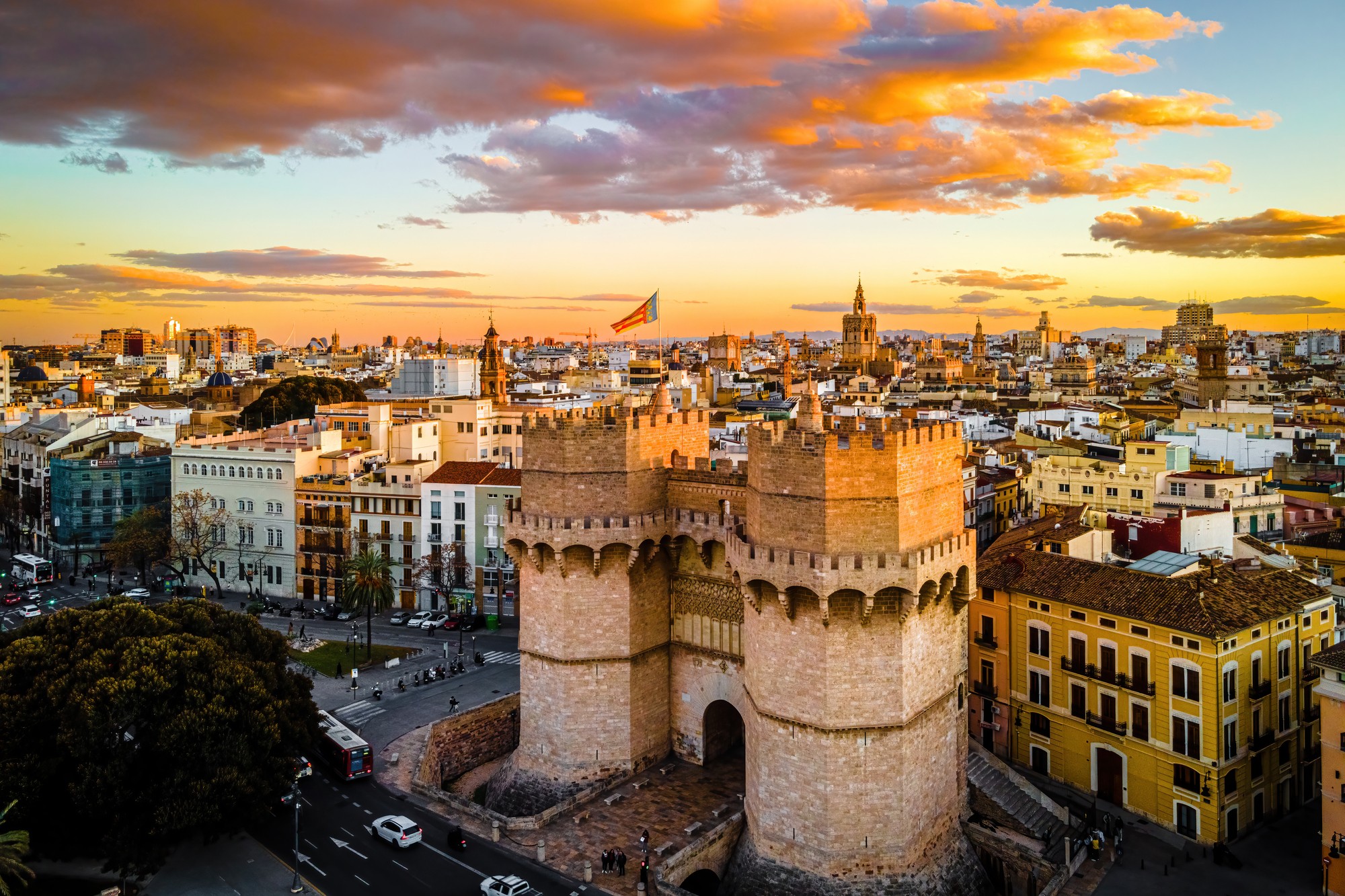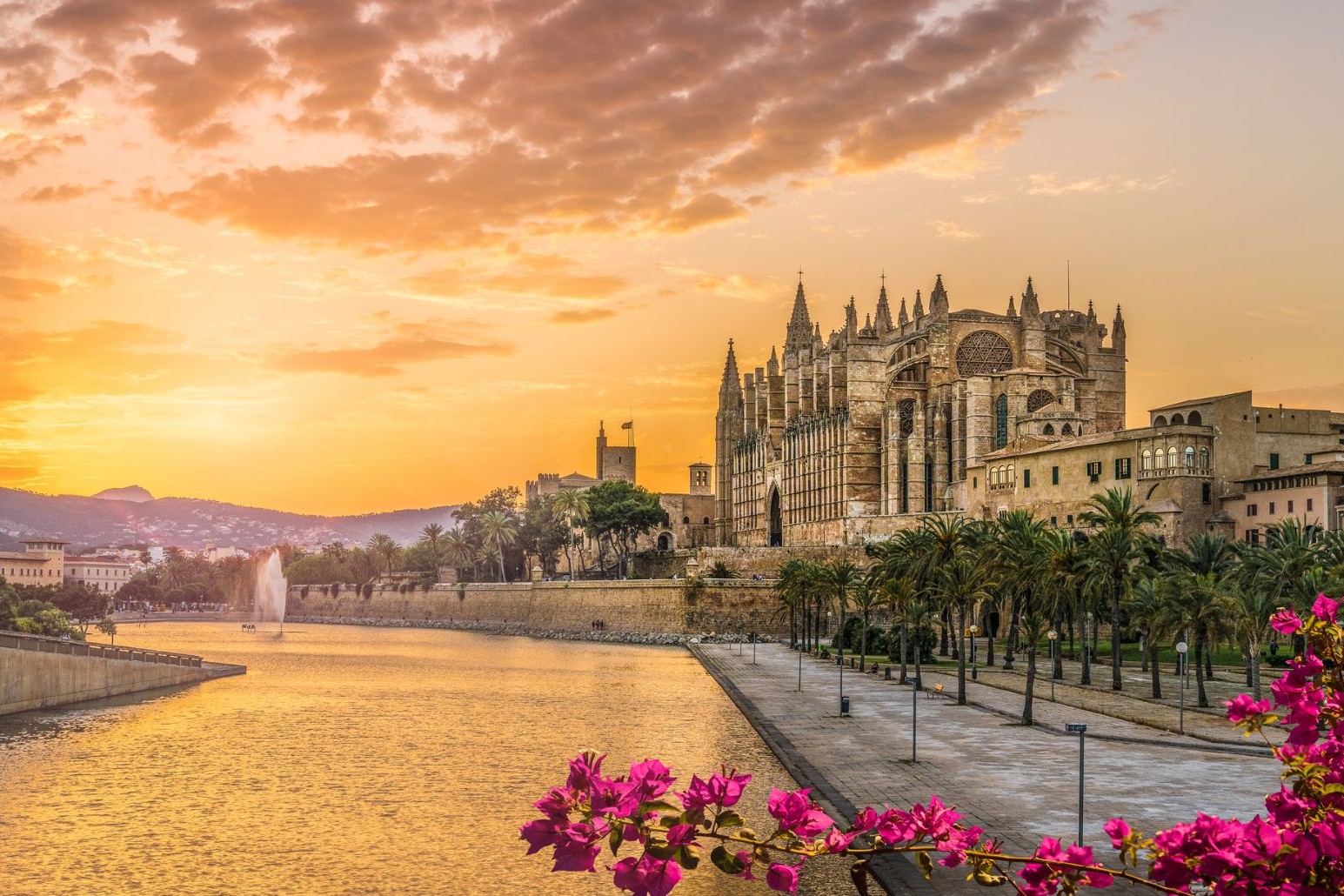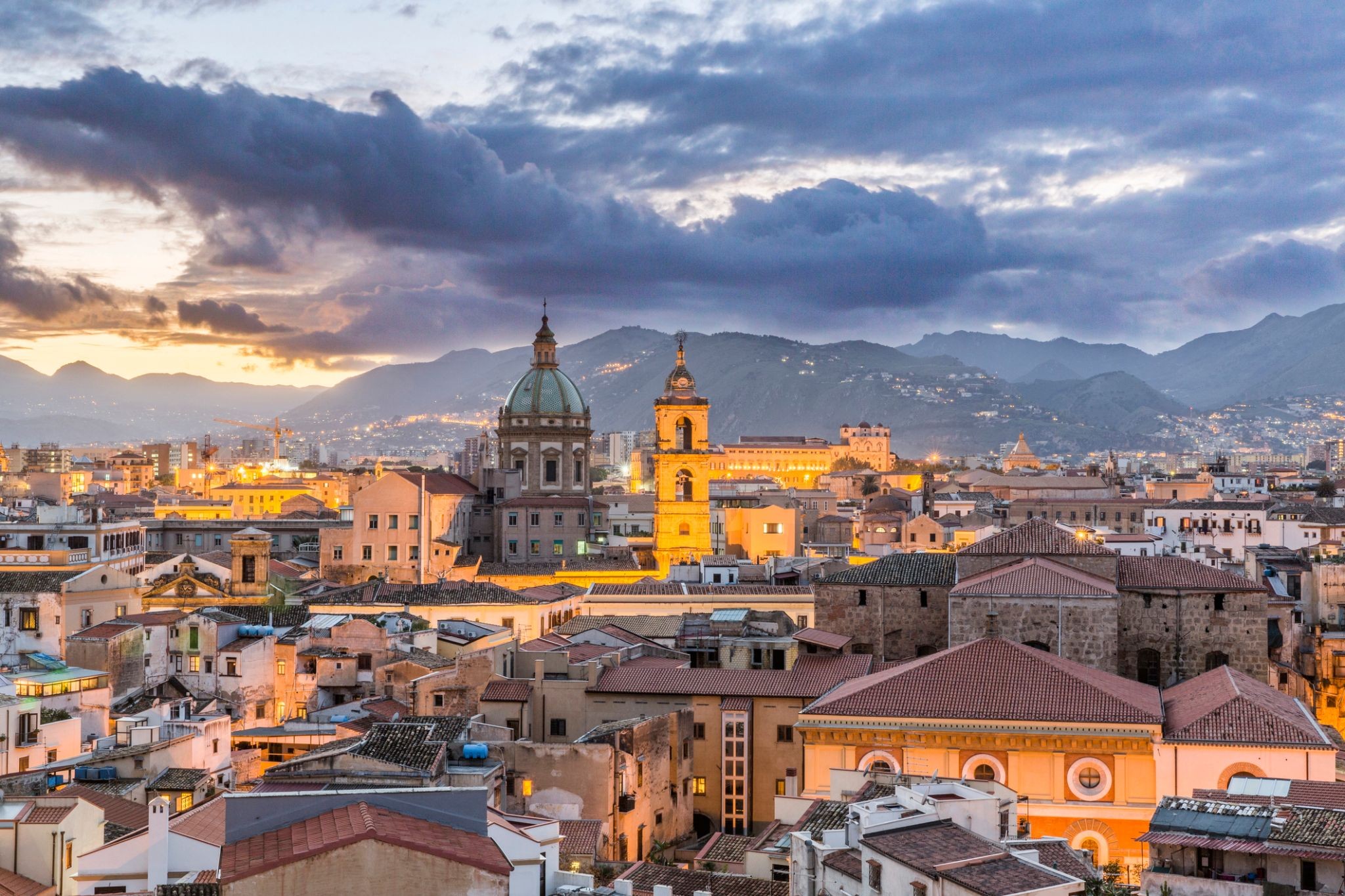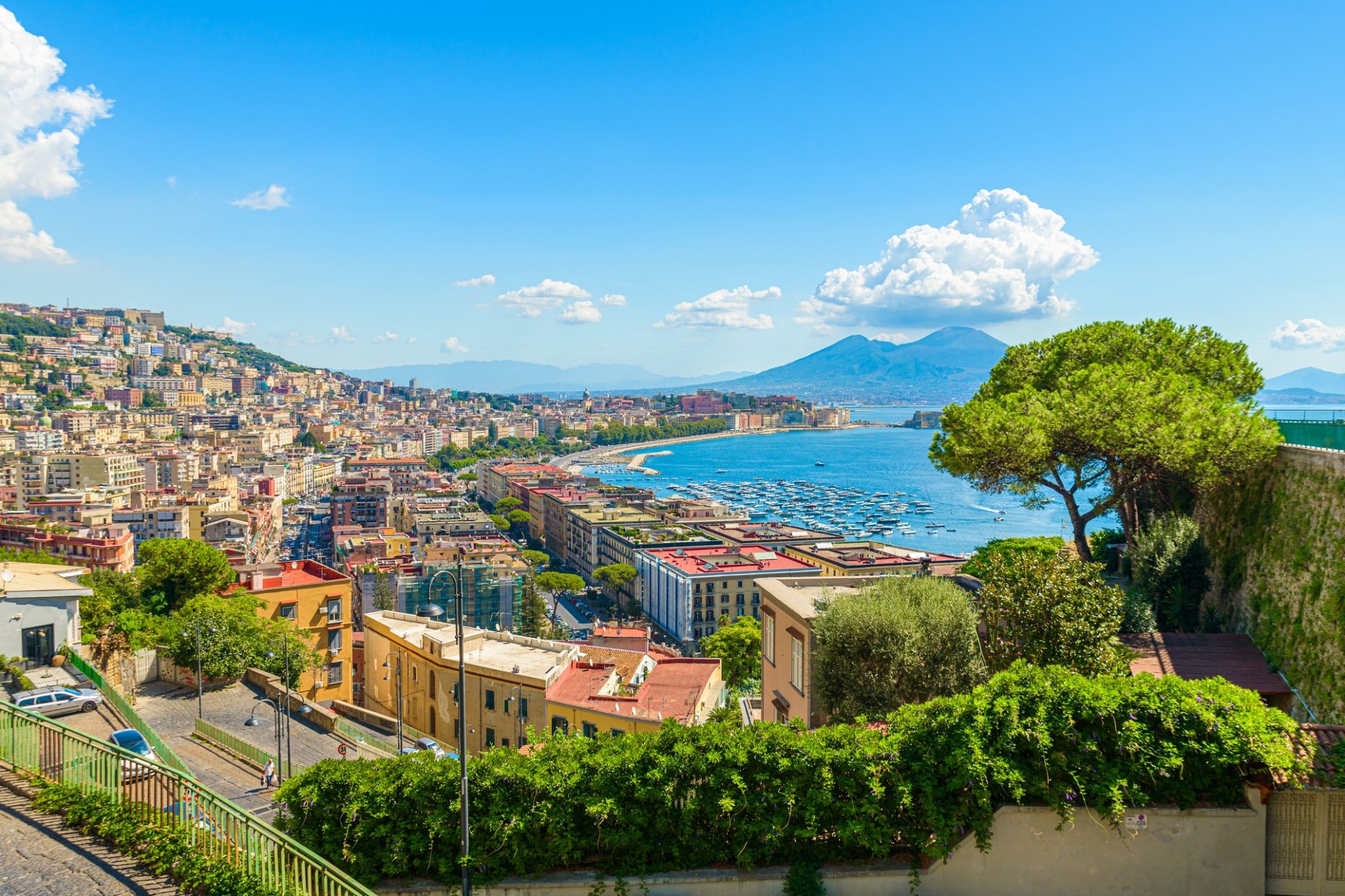Cruise: 30,875,382
Unfortunately this cruise is temporarily unavailable.
20 nights Miami, Philipsburg, St John s, Bridgetown, Funchal, Lisbon, Valencia, Palma de Mallorca, Palermo, Na
| Cruise Region : Caribbean |
| Company : MSC Cruises |
| Ship : MSC Seaside |
| Journey Start : Sun 06 Apr 2025 |
| Journey End : Sat 26 Apr 2025 |
| Count Nights : 20 nights |
Schedule
| Day | Date | Port | Arrival | Departure |
|---|---|---|---|---|
| 1 | 6.04 Sun | Miami / USA | 18:00 | |
| 2 | 7.04 Mon | Day at sea / Sea | ||
| 3 | 8.04 Tue | Day at sea / Sea | ||
| 4 | 9.04 Wed | Philipsburg / Saint Martin | 08:00 | 19:00 |
| 5 | 10.04 Thu | Saint John / Antigua and Barbuda | 07:00 | 16:00 |
| 6 | 11.04 Fri | Bridgetown / Barbados | 09:00 | 18:00 |
| 7 | 12.04 Sat | Day at sea / Sea | ||
| 8 | 13.04 Sun | Day at sea / Sea | ||
| 9 | 14.04 Mon | Day at sea / Sea | ||
| 10 | 15.04 Tue | Day at sea / Sea | ||
| 11 | 16.04 Wed | Day at sea / Sea | ||
| 12 | 17.04 Thu | Day at sea / Sea | ||
| 13 | 18.04 Fri | Madeira / Portugal | 08:00 | 18:00 |
| 14 | 19.04 Sat | Day at sea / Sea | ||
| 15 | 20.04 Sun | Lisbon / Portugal | 07:00 | 17:00 |
| 16 | 21.04 Mon | Day at sea / Sea | ||
| 17 | 22.04 Tue | Valencia / Spain | 10:00 | 20:00 |
| 18 | 23.04 Wed | Palma de Mallorca / Spain | 09:00 | 18:00 |
| 19 | 24.04 Thu | Day at sea / Sea | ||
| 20 | 25.04 Fri | Sicily Palermo / Italy | 08:00 | 18:00 |
| 21 | 26.04 Sat | Naples / Italy | 06:30 |
- Accommodation in a cabin of the selected category
- Meals in the restaurant (buffet) on the "buffet" system, including breakfast, lunch and dinner, as well as snacks in the cafe and pizzeria throughout the day. Water, juices, tea, coffee from machines are available in the buffet free of charge 24 hours.
- Meals in the main restaurant "a la carte". As a rule, all liners have two or three main restaurants with menu service. The dishes in such restaurants are more refined and varied than in the buffet. Drinks are ordered for an additional fee.
- Entertainment on board, such as animation, master classes, aerobics, evening performances in the theatre, live music in bars, discos.
- Access to all public areas of the liner: fitness center (gym), swimming pools, jacuzzis by the pools, water park, library, mini-clubs for children.
- Services of educators in mini-clubs for children from 6 months to 17 years
- Games on sports grounds, including tennis, mini-football, basketball, badminton, mini-golf and others.
- Use of watercraft during embarkation or disembarkation in ports if the liner does not enter the port.
- Luggage transportation at the beginning and end of the cruise.
- Service charge, of 12 euros per night per guest.
- Depending on the cabin category, you may be provided with additional services free of charge. For example, ALL INCLUSIVE drinks in bars and restaurants, cabin service with free delivery 24 hours, use of the spa center.
Important: MSC reserves the right to change the cabin to the same category or higher. However, MSC will do everything possible to avoid changing the cabin.
Additional costs:
- insurance (medical insurance, travel cancellation insurance)
- airfare, rail transport (transportation costs to the port of departure and from the port of arrival of the ship)
- transfers (from the airport/train station to the sea port and back)
- excursions
- pre- and post-cruise hotel reservations if you want to extend your holiday on land.
Additionally paid on the liner:
- visiting alternative bars and restaurants
- services of spa centers, hairdressers, beauty salons
- medical services
- laundry, ironing
- casino
- slot machines, etc. depending on the specific liner.
For any purchase of goods on the liner in bars, restaurants, shops and services in the spa center, hairdresser, etc. you will be additionally charged a service fee, which will average 15% of the purchase price.
Drink packages for the seasons "Winter 2024-2025", "Summer 2025", "Winter 2025-2026", "Summer 2026", "Winter 2026-2027"
Drink packages must be booked by all guests staying in the same cabin, including children over 3 years old (they book the MINORS PACKAGE for children);
Seating at the same table in the main restaurant for dinner is only possible if all guests have booked the same drink package (or if all guests do not have one);
Packages are intended for personal use, the cruise card is not transferable to other people. Only one drink can be ordered per request. In case of violation of the rules for using the package, the cruise company reserves the right to block this package without a refund for unused days;
Packages are valid every day during the cruise and cannot be purchased per day;
In accordance with Saudi Arabian law, alcoholic beverages are not served during port calls in Saudi Arabia (only soft drinks are available). Alcoholic beverages will only be available once the ship has left port and is at sea;
The price of drink packages when purchased on board will be higher than when booking a cruise;
A detailed list of drinks included in drink packages will be provided in the bar menus on board the ship;
Drink packages are also valid on Sir Bani Yas and Ocean Cay;
The cruise line reserves the right to suspend drink packages at any time;
The price is per person per day.
Where applicable:
Mediterranean; Northern Europe; UAE and Gulf; Canary Islands; Caribbean from Fort-de-France; Round-the-World Routes
EASY PACKAGE (for adults aged 18 and over)
A limited selection of alcoholic and non-alcoholic drinks by the glass:
Beer (1 type) and non-alcoholic beer
Wine (white, pink, red)
Alcoholic and non-alcoholic cocktails
Limited selection of spirits
Solid drinks and juices
Classic hot drinks: espresso, americano, cappuccino, latte, tea
Bottled mineral water
There is a limit on alcoholic drinks:
15 drinks per day (non-alcoholic drinks – unlimited).
A detailed list of drinks is presented in the bar menus on board the ship.
Those who wish can take advantage of a €7 discount on a more expensive drink that is not included in the Easy package (a 15% service charge will be added to the price difference).
Where it applies:
24 hours a day in certain bars on board, in the main restaurants and in the buffet restaurant.
Where it does not apply:
in alternative restaurants, in Venchi 1878, Jean-Philippe Maury, MSC Virtuosa Starship Club, MSC World Europa & America Coffee Emporium, MSC World Europa Raj Polo Tea Room.
Note:
The package must be booked by all guests staying in the same cabin or traveling together, in which case seating in the main restaurant will be at the same table. This rule also applies to children aged three and over, for whom the MINORS PACKAGE (for children) is purchased.
The package price does not include: minibar, bottled alcoholic beverages, some brands of drinks, ice cream.
Cruises from 1 to 4 days 40 €/day
Cruises from 5 to 10 days 40 €/day
Cruises from 11 days and more 36 €/day
EASY PLUS PACKAGE (for adults from 18 years)
A wide selection of alcoholic and non-alcoholic drinks by the glass, costing up to 9 €:
Draught, craft, bottled and non-alcoholic beer
Wine (white, pink, red, and sparkling)
Drink of the day
Alcoholic and non-alcoholic cocktails
Strong alcoholic drinks of famous brands
Carbonated drinks and juices
A wide selection of classic hot drinks: espresso, americano, cappuccino, latte, iced coffee, tea, etc.
Bottled mineral water
There is a limit on alcoholic drinks:
15 drinks per day (non-alcoholic drinks - unlimited).
The Easy plus package gives a 10% discount on the purchase of bottles of wine on board.
Those who wish can take advantage of a €9 discount on a more expensive drink that is not included in the Easy plus package (a 15% service charge will be added to the difference in price).
Where it applies:
24 hours a day in the onboard bars, main restaurants, buffet restaurant and alternative restaurants.
Where it does not apply:
Venchi 1878, Jean-Philippe Maury and MSC Virtuosa Starship Club.
Note:
The package must be booked by all guests staying in the same cabin or traveling together, in which case seating in the main restaurant will be at the same table. This rule also applies to children aged three and over, for whom the MINORS PACKAGE (for children) is purchased.
The following items are not included in the package price: minibar, bottled alcoholic beverages, some brands of drinks, ice cream.
Cruises from 1 to 4 days 54 €/day
Cruises from 5 to 10 days 54 €/day
Cruises from 11 days and more 50 €/day
PREMIUM EXTRA PACKAGE (for adults from 18 years)
A wide selection of alcoholic and non-alcoholic drinks by the glass, costing up to 14 €:
Draught, craft, bottled and non-alcoholic beer A wide selection of wines and champagne
Drink of the day
Alcoholic and non-alcoholic cocktails
Premium spirits
Carbonated drinks and juices
A wide selection of classic hot drinks: espresso, americano, cappuccino, latte, iced coffee, tea, etc.
Bottled mineral water
Limit on alcoholic drinks:
15 drinks per day (unlimited soft drinks).
The Premium Extra package offers a 25% discount on bottles of wine and champagne on board.
Where it is valid:
24 hours a day in the onboard bars, main restaurants, buffet restaurant and alternative restaurants.
Where it is not valid:
Venchi 1878, Jean-Philippe Maury and MSC Virtuosa Starship Club.
Note:
The package must be booked by all guests staying in the same cabin or travelling together, in which case seating in the main restaurant will be at the same table. This rule also applies to children aged three and over, for whom the MINORS PACKAGE (for children) is purchased.
The package price does not include: minibar, bottled alcoholic drinks, some brands of drinks, ice cream.
Cruises from 1 to 4 days 75 €/day
Cruises from 5 to 10 days 75 €/day
Cruises from 11 days and more 70 €/day
ALCOHOL-FREE PACKAGE (for adults from 18 years)
A wide selection of soft drinks, carbonated and energy drinks, bottled mineral water, fruit juices, a wide range of coffee drinks, tea and ice cream "to go".
Where it is valid:
24 hours a day in certain bars on board, in the main restaurants and in the buffet restaurant.
Where it is not valid:
in alternative restaurants, in Venchi 1878, Jean-Philippe Maury, MSC Virtuosa Starship Club.
Note:
The package must be booked by all guests staying in the same cabin or traveling together, in this case the seating in the main restaurant will be at the same table. This rule also applies to children who have reached the age of three, for whom the MINORS PACKAGE (for children) is purchased.
The package price does not include: mini-bar, alcoholic drinks.
Cruises from 1 to 4 days 26 €/day
Cruises from 5 to 10 days 26 €/day
Cruises from 11 days and more 24 €/day
MINORS PACKAGE (for children aged 3 to 17)
A wide selection of soft drinks, carbonated and energy drinks, bottled mineral water, fruit juices, a wide range of coffee drinks, tea and ice cream to go.
Where it is valid:
24 hours a day in certain bars on board, in the main restaurants and in the buffet restaurant.
Where it is not valid:
in alternative restaurants, in Venchi 1878, Jean-Philippe Maury, MSC Virtuosa Starship Club.
Note:
This package is bookable for children aged 3 to 17 years old, traveling in the same cabin with adults. However, adult passengers must book adult drink packages.
The following are not included in the package price: minibar, alcoholic drinks.
Cruises from 1 to 4 days 17 € / day
Cruises from 5 to 10 days 17 € / day
Cruises from 11 days and more 17 € / day
Caribbean from Miami; North America; Alaska
EASY PACKAGE (for adults from 21 years)
A limited selection of alcoholic and non-alcoholic drinks by the glass:
Beer (1 type) and non-alcoholic beer
Wine (white, pink, red)
Alcoholic and non-alcoholic cocktails
Limited selection of spirits
Sodas and juices
Classic hot drinks: espresso, americano, cappuccino, latte, tea
Bottled mineral water
There is a limit on alcoholic drinks:
15 drinks per day (non-alcoholic drinks - unlimited).
A detailed list of drinks is presented in the bar menus on board the liner.
Those who wish can take advantage of a $10 discount on the purchase of a more expensive drink that is not included in the Easy package (an 18% service charge will be added to the difference in price).
Where it applies:
24 hours a day in certain bars on board, in the main restaurants and in the buffet restaurant.
Where it does not apply:
in alternative restaurants, in Venchi 1878, Jean-Philippe Maury, MSC Virtuosa Starship Club, MSC World Europa & America Coffee Emporium, MSC World Europa Raj Polo Tea Room.
Note:
The package must be booked by all guests staying in the same cabin or traveling together, in this case, seating in the main restaurant will be at the same table. This rule also applies to children aged three and over, for whom the MINORS PACKAGE (for children) is purchased.
Not included in the package price: minibar, bottled alcoholic drinks, some brands of drinks, ice cream.
Cruises from 1 to 4 days 40 €/day
Cruises from 5 to 10 days 40 €/day
Cruises from 11 days and more 36 €/day
EASY PLUS PACKAGE (for adults 21 and older)
A wide selection of alcoholic and non-alcoholic drinks by the glass, priced up to $14:
Draft, craft, bottled and non-alcoholic beer
Wine (white, pink, red, and sparkling)
Drink of the day
Alcoholic and non-alcoholic cocktails
Strong alcoholic drinks of famous brands
Carbonated drinks and juices
A wide selection of classic hot drinks: espresso, americano, cappuccino, latte, iced coffee, tea, etc.
Bottled mineral water
There is a limit on alcoholic drinks:
15 drinks per day (non-alcoholic drinks - unlimited).
The Easy plus package gives a 10% discount on the purchase of bottles of wine on board.
Those who wish can take advantage of a $14 discount on a more expensive drink that is not included in the Easy plus package (an 18% service charge will be added to the difference in price).
Where it applies:
24 hours a day in the onboard bars, main restaurants, buffet restaurant and alternative restaurants.
Where it does not apply:
Venchi 1878, Jean-Philippe Maury and MSC Virtuosa Starship Club.
Note:
The package must be booked by all guests staying in the same cabin or traveling together, in this case, seating in the main restaurant will be at the same table. This rule also applies to children aged three and over, for whom the MINORS PACKAGE (for children) is purchased.
The package does not include: minibar, bottled alcoholic beverages, some brands of drinks, ice cream.
Cruises from 1 to 4 days 54 €/day
Cruises from 5 to 10 days 54 €/day
Cruises from 11 days and more 50 €/day
PREMIUM EXTRA PACKAGE (for adults from 21 years old)
A wide selection of alcoholic and non-alcoholic drinks by the glass, costing up to $16:
Draft, craft, bottled and non-alcoholic beer
A wide selection of wines and champagne
Drink of the day
Alcoholic and non-alcoholic cocktails
Premium spirits
Soft drinks and juices
A wide selection of classic hot drinks: espresso, americano, cappuccino, latte, iced coffee, tea, etc.
Bottled mineral water
Limit on alcoholic drinks:
15 drinks per day (unlimited soft drinks).
The Premium Extra package offers a 25% discount on bottles of wine and champagne on board.
Where it is valid:
24 hours a day in the onboard bars, main restaurants, buffet restaurant and alternative restaurants.
Where it is not valid:
Venchi 1878, Jean-Philippe Maury and MSC Virtuosa Starship Club.
Note:
The package must be booked by all guests staying in the same cabin or travelling together, in which case seating in the main restaurant will be at the same table. This rule also applies to children aged three and over, for whom the MINORS PACKAGE (for children) is purchased.
The package price does not include: minibar, bottled alcoholic drinks, some brands of drinks, ice cream.
Cruises from 1 to 4 days 75 €/day
Cruises from 5 to 10 days 75 €/day
Cruises from 11 days and more 70 €/day
ALCOHOL-FREE PACKAGE (for adults from 21 years)
A wide selection of soft drinks, carbonated and energy drinks, bottled mineral water, fruit juices, a wide range of coffee drinks, tea and ice cream "to go".
Where it is valid:
24 hours a day in certain bars on board, in the main restaurants and in the buffet restaurant.
Where it is not valid:
in alternative restaurants, in Venchi 1878, Jean-Philippe Maury, MSC Virtuosa Starship Club.
Note:
The package must be booked by all guests staying in the same cabin or traveling together, in this case the seating in the main restaurant will be at the same table. This rule also applies to children aged three and over, for whom a MINORS PACKAGE (for children) is purchased.
The following are not included in the package price: minibar, alcoholic beverages.
Cruises from 1 to 4 days 26 €/day
Cruises from 5 to 10 days 26 €/day
Cruises from 11 days and more 24 €/day
MINORS PACKAGE (for children aged 3 to 20)
A wide selection of soft drinks, carbonated and energy drinks, bottled mineral water, fruit juices, a wide range of coffee drinks, tea and ice cream "to go".
Where it applies:
24 hours a day in certain bars on board, in the main restaurants and in the buffet restaurant.
Where it does not apply:
in alternative restaurants, in Venchi 1878, Jean-Philippe Maury, MSC Virtuosa Starship Club.
Note:
This package is bookable for children aged 3 to 20 years old, travelling in the same cabin with adults. In this case, adult passengers must book adult drink packages.
The following items are not included in the package price: minibar, alcoholic drinks.
Cruises from 1 to 4 days 17 €/day
Cruises from 5 to 10 days 17 €/day
Cruises from 11 days and more 17 €/day
Asia; Far East
EASY PACKAGE (for adults 20 years and older)
A limited selection of alcoholic and non-alcoholic drinks by the glass:
Beer (1 type) and non-alcoholic beer
Wine (white, pink, red)
Alcoholic and non-alcoholic cocktails
Limited selection of spirits
Carbonated drinks and juices
Classic hot drinks: espresso, americano, cappuccino, latte, tea
Bottled mineral water
There is a limit on alcoholic drinks:
15 drinks per day (non-alcoholic drinks - unlimited).
A detailed list of drinks is presented in the bar menus on board the liner.
Those who wish can take advantage of an $8 discount on the purchase of a more expensive drink that is not included in the Easy package (an 18% service charge will be added to the difference in price).
Where it applies:
24 hours a day in certain bars on board, in the main restaurants and in the buffet restaurant.
Where it does not apply:
in alternative restaurants, in Venchi 1878, Jean-Philippe Maury, MSC Virtuosa Starship Club, MSC World Europa & America Coffee Emporium, MSC World Europa Raj Polo Tea Room.
Note:
The package must be booked by all guests staying in the same cabin or traveling together, in which case seating in the main restaurant will be at the same table. This rule also applies to children aged three and over, for whom the MINORS PACKAGE (for children) is purchased.
The package price does not include: minibar, bottled alcoholic beverages, some brands of drinks, ice cream.
Cruises from 1 to 4 days 40 €/day
Cruises from 5 to 10 days 40 €/day
Cruises from 11 days and more 36 €/day
EASY PLUS PACKAGE (for adults from 20 years old)
A wide selection of alcoholic and non-alcoholic drinks by the glass, costing up to $10:
Draft, craft, bottled and non-alcoholic beer
Wine (white, pink, red, and sparkling)
Drink of the day
Alcoholic and non-alcoholic cocktails
Strong alcoholic drinks of famous brands
Carbonated drinks and juices
A wide selection of classic hot drinks: espresso, americano, cappuccino, latte, iced coffee, tea, etc.
Bottled mineral water
Limit on alcoholic drinks:
15 drinks per day (unlimited soft drinks).
The Easy plus package gives a 10% discount on bottles of wine on board.
A $10 discount on a more expensive drink not included in the Easy plus package (an 18% service charge will be added to the difference in price).
Where it applies:
24 hours a day in the onboard bars, main restaurants, buffet restaurant and alternative restaurants.
Where it does not apply:
Venchi 1878, Jean-Philippe Maury and MSC Virtuosa Starship Club.
Note:
The package must be booked by all guests staying in the same cabin or traveling together, in which case seating in the main restaurant will be at the same table. This rule also applies to children aged three and over, for whom the MINORS PACKAGE (for children) must be purchased.
Not included in the package price: minibar, bottled alcoholic drinks, some brands of drinks, ice cream.
Cruises from 1 to 4 days 54 € / day
Cruises from 5 to 10 days 54 € / day
Cruises from 11 days and more 50 € / day
PREMIUM EXTRA PACKAGE (for adults 20 years and older)
A wide selection of alcoholic and non-alcoholic drinks by the glass, priced up to $16:
Draft, craft, bottled and non-alcoholic beer A wide selection of wines and champagne
Drink of the day
Alcoholic and non-alcoholic cocktails
Premium spirits
Carbonated drinks and juices
A wide selection of classic hot drinks: espresso, americano, cappuccino, latte, iced coffee, tea, etc.
Bottled mineral water
There is a limit on alcoholic drinks:
15 drinks per day (non-alcoholic drinks - unlimited).
The Premium Extra package gives a 25% discount on the purchase of bottles of wine and champagne on board.
Where it applies:
24 hours a day in the onboard bars, main restaurants, buffet restaurant and alternative restaurants.
Where it does not apply:
Venchi 1878, Jean-Philippe Maury and MSC Virtuosa Starship Club.
Note:
The package must be booked by all guests staying in the same cabin or travelling together, in which case seating in the main restaurant will be at the same table. This rule also applies to children aged three and over, for whom the MINORS PACKAGE (for children) is purchased.
The package price does not include: minibar, bottled alcoholic beverages, some brands of drinks, ice cream.
Cruises from 1 to 4 days 75 €/day
Cruises from 5 to 10 days 75 €/day
Cruises from 11 days and more 70 €/day
ALCOHOL-FREE PACKAGE (for adults from 20 years)
A wide selection of soft drinks, carbonated and energy drinks, bottled mineral water, fruit juices, a wide range of coffee drinks, tea and ice cream "to go".
Where it is valid:
24 hours a day in certain bars on board, in the main restaurants and in the buffet restaurant.
Where it is not valid:
in alternative restaurants, in Venchi 1878, Jean-Philippe Maury, MSC Virtuosa Starship Club.
Note:
The package must be booked by all guests staying in the same cabin or traveling together, in this case the seating in the main restaurant will be at the same table. This rule also applies to children aged three and over, for whom a MINORS PACKAGE (for children) is purchased.
The following are not included in the package price: minibar, alcoholic beverages.
Cruises from 1 to 4 days 26 €/day
Cruises from 5 to 10 days 26 €/day
Cruises from 11 days and more 24 €/day
MINORS PACKAGE (for children aged 3 to 19)
A wide selection of soft drinks, carbonated and energy drinks, bottled mineral water, fruit juices, a wide range of coffee drinks, tea and ice cream "to go".
Where it applies:
24 hours a day in certain bars on board, in the main restaurants and in the buffet restaurant.
Where it does not apply:
in alternative restaurants, in Venchi 1878, Jean-Philippe Maury, MSC Virtuosa Starship Club.
Note:
This package is booked for children from 3 to 19 years old, traveling in the same cabin with adults. However, adult passengers must book adult drink packages.
The following are not included in the package price: minibar, alcoholic drinks.
Cruises from 1 to 4 days 17 € / day
Cruises from 5 to 10 days 17 € / day
Cruises from 11 days and more 17 € / day
The cruise booking conditions may vary depending on the itinerary, season, and selected package. However, the basic conditions include:
1. **Deposit and Full Payment:**
- A deposit of 30% is required to confirm the booking.
- Full payment is usually required 60-90 days prior to departure. For late bookings, full payment may be required immediately.
2. **Cancellation and Penalties:**
- Cancellation penalties depend on the time remaining before departure. The closer to the departure date, the higher the penalties.
- More than 60 days before departure: €50 per person
- 59 to 30 days: 30% of the total price
- 29 to 22 days: 50%
- 21 to 15 days: 70%
- Less than 14 days before departure: 100%
3. **Booking Changes:**
- Passenger substitutions are subject to an additional fee of €50 per person.
4. **Insurance:**
- It is recommended to purchase travel or medical insurance to cover potential costs in case of cancellation or changes to the booking, as well as medical expenses during the cruise.
5. **Document Requirements:**
- All passengers must have valid passports and visas for visiting countries (if required by the destination) on the cruise itinerary. The responsibility for obtaining visas lies with the passengers.
-
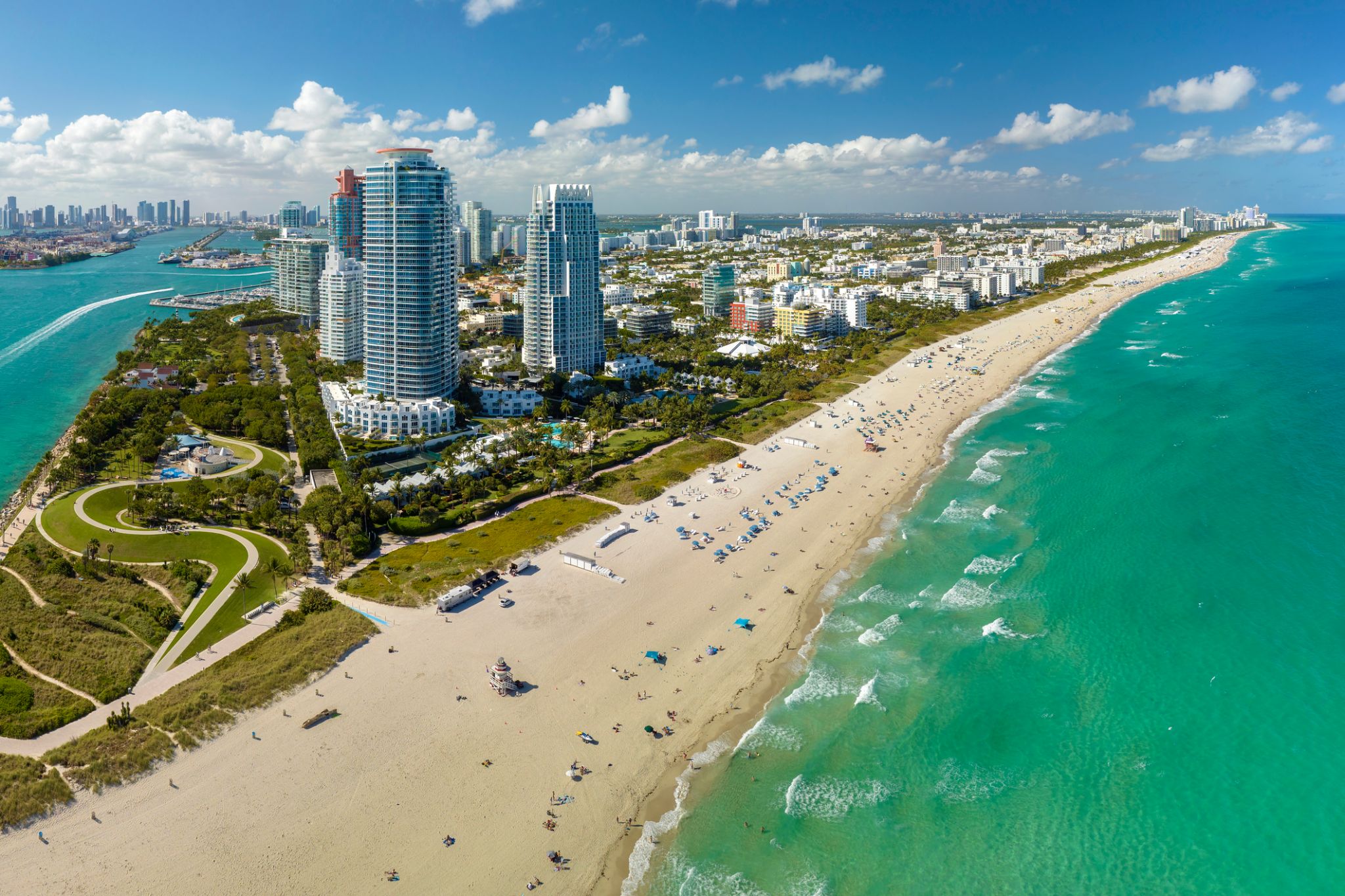 Day 1: 18:00
Day 1: 18:00Miami / USA
Miami, officially the City of Miami, is the cultural, economic and financial center of South Florida. Miami is the seat of Miami-Dade County, the most populous county in Florida. The city covers an area of about 56.6 square miles (147 km2), between the Everglades to the west and Biscayne Bay on the east; with a 2017 estimated population of 463,347, Miami is the sixth most densely populated major city in the United States. The Miami metropolitan area is home to 6.1 million people and the seventh-largest metropolitan area in the nation. Miami's metro area is the second-most populous metropolis in the southeastern United States and fourth-largest urban area in the U.S.
Miami is a major center, and a leader in finance, commerce, culture, media, entertainment, the arts, and international trade. The Miami Metropolitan Area is by far the largest urban economy in Florida and the 12th largest in the United States with a GDP of $344.9 billion as of 2017. In 2012, Miami was classified as an "Alpha−" level world city in the World Cities Study Group's inventory. In 2010, Miami ranked seventh in the United States and 33rd among global cities in terms of business activity, human capital, information exchange, cultural experience, and political engagement. In 2008, Forbes magazine ranked Miami "America's Cleanest City", for its year-round good air quality, vast green spaces, clean drinking water, clean streets, and citywide recycling programs. According to a 2009 UBS study of 73 world cities, Miami was ranked as the richest city in the United States, and the world's seventh-richest city in terms of purchasing power. Miami is nicknamed the "Capital of Latin America" and is the largest city with a Cuban-American plurality.
Greater Downtown Miami has one of the largest concentrations of international banks in the United States, and is home to many large national and international companies. The Civic Center is a major center for hospitals, research institutes, medical centers, and biotechnology industries. For more than two decades, the Port of Miami, known as the "Cruise Capital of the World", has been the number one cruise passenger port in the world. It accommodates some of the world's largest cruise ships and operations, and is the busiest port in both passenger traffic and cruise lines. Metropolitan Miami is also a major tourism hub in the southeastern U.S. for international visitors, ranking number two in the country after New York City.
-
 Day 2:
Day 2:Day at sea / Sea
-
 Day 3:
Day 3:Day at sea / Sea
-
 Day 4: 08:00-19:00
Day 4: 08:00-19:00Philipsburg / Saint Martin
-
 Day 5: 07:00-16:00
Day 5: 07:00-16:00Saint John / Antigua and Barbuda
-
 Day 6: 09:00-18:00
Day 6: 09:00-18:00Bridgetown / Barbados
Bridgetown is the capital and largest city of Barbados. Formerly The Town of Saint Michael, the Greater Bridgetown area is located within the parish of Saint Michael. Bridgetown is sometimes locally referred to as "The City", but the most common reference is simply "Town". As of 2014, its metropolitan population stands at roughly 110,000.
The Bridgetown port, found along Carlisle Bay (at 13.106°N 59.632°W) lies on the southwestern coast of the island. Parts of the Greater Bridgetown area (as roughly defined by the Ring Road Bypass or more commonly known as the ABC Highway), sit close to the borders of the neighbouring parishes Christ Church and St. James. The Grantley Adams International Airport for Barbados, is located 16 kilometres (10 mi) southeast of Bridgetown city centre, and has daily flights to major cities in the United Kingdom, United States, Canada and the Caribbean. There is no longer a local municipal government, but it is a constituency of the national Parliament. During the short-lived 1950s-1960s Federation of the British West Indian Territories, Bridgetown was one of three capital cities within the region being considered to be the Federal capital of region.
The present-day location of the city was established by English settlers in 1628; a previous settlement under the authority of Sir William Courten was at St. James Town. Bridgetown is a major West Indies tourist destination, and the city acts as an important financial, informatics, convention centre, and cruise ship port of call in the Caribbean region. On 25 June 2011, "Historic Bridgetown and its Garrison" was added as a World Heritage Site of UNESCO.
-
 Day 7:
Day 7:Day at sea / Sea
-
 Day 8:
Day 8:Day at sea / Sea
-
 Day 9:
Day 9:Day at sea / Sea
-
 Day 10:
Day 10:Day at sea / Sea
-
 Day 11:
Day 11:Day at sea / Sea
-
 Day 12:
Day 12:Day at sea / Sea
-
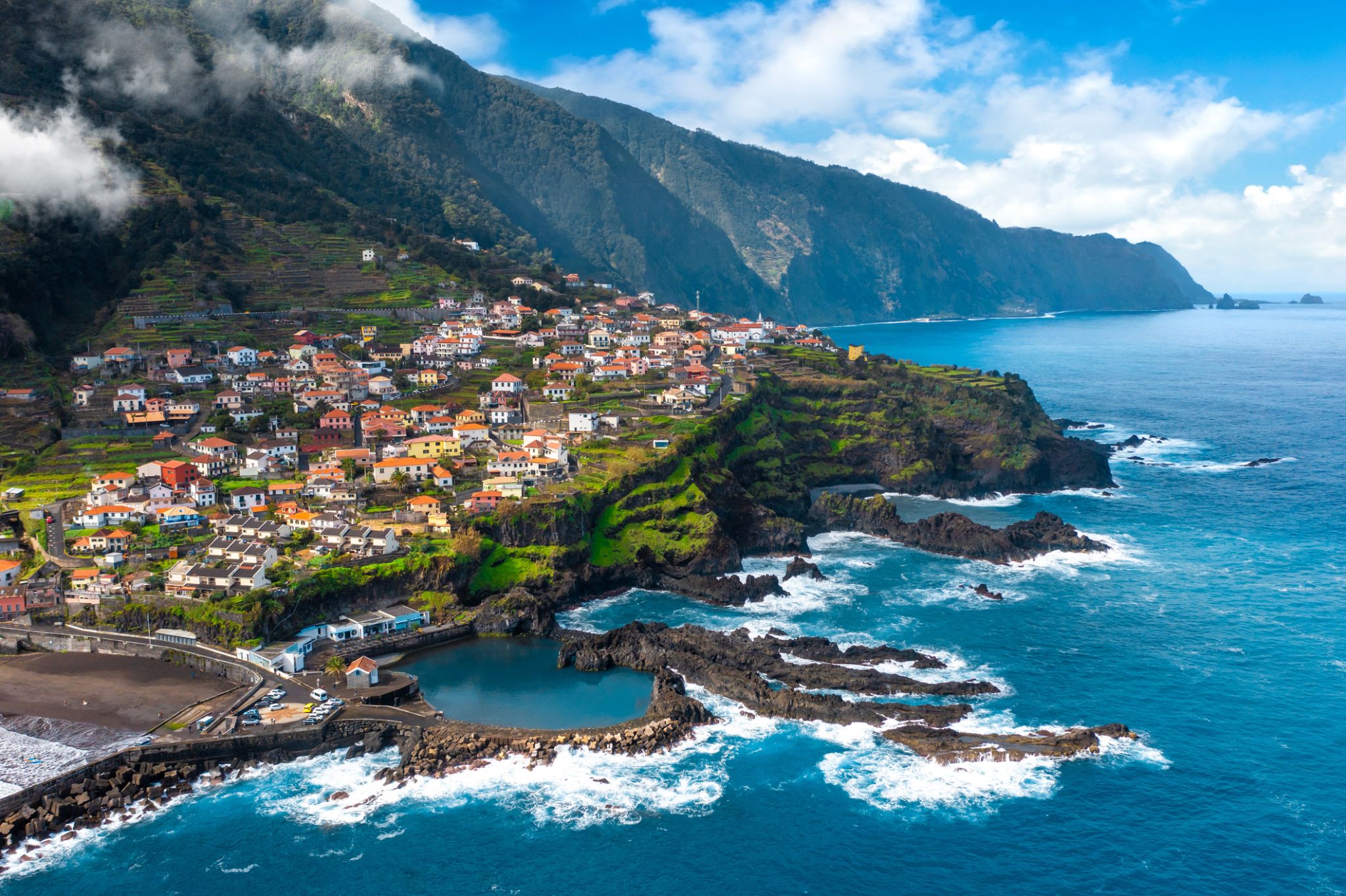 Day 13: 08:00-18:00
Day 13: 08:00-18:00Madeira / Portugal
Madeira, officially the Autonomous Region of Madeira, is one of the two autonomous regions of Portugal (along with the Azores). It is an archipelago situated in the north Atlantic Ocean, southwest of Portugal. Its total population was estimated in 2011 at 267,785. The capital of Madeira is Funchal, which is located on the main island's south coast.
The archipelago is just under 400 kilometres (250 mi) north of Tenerife, Canary Islands. Bermuda and Madeira, a few time zones apart, are the only land in the Atlantic on the 32nd parallel north. It includes the islands of Madeira, Porto Santo, and the Desertas, administered together with the separate archipelago of the Savage Islands. The region has political and administrative autonomy through the Administrative Political Statue of the Autonomous Region of Madeiraprovided for in the Portuguese Constitution. The autonomous region is an integral part of the European Union as an outermost region.
-
 Day 14:
Day 14:Day at sea / Sea
-
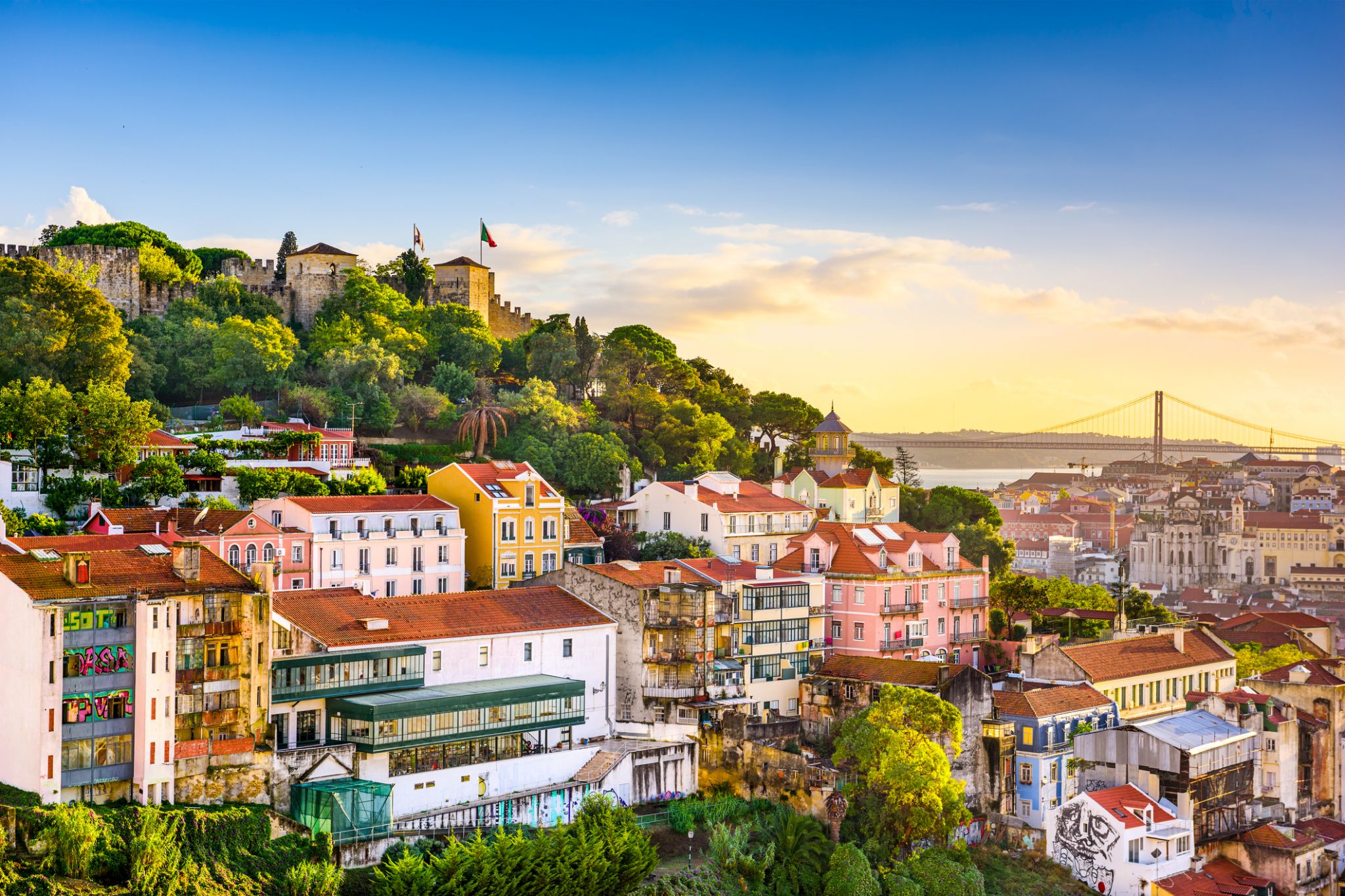 Day 15: 07:00-17:00
Day 15: 07:00-17:00Lisbon / Portugal
Lisbon is the capital and the largest city of Portugal, with an estimated population of 505,526 within its administrative limits in an area of 100.05 km2. Its urban area extends beyond the city's administrative limits with a population of around 2.8 million people, being the 11th-most populous urban area in the European Union. About 3 million people live in the Lisbon Metropolitan Area (which represents approximately 27% of the country's population). It is mainland Europe's westernmost capital city and the only one along the Atlantic coast. Lisbon lies in the western Iberian Peninsula on the Atlantic Ocean and the River Tagus. The westernmost areas of its metro area form the westernmost point of Continental Europe, which is known as Cabo da Roca, located in the Sintra Mountains.
-
 Day 16:
Day 16:Day at sea / Sea
-
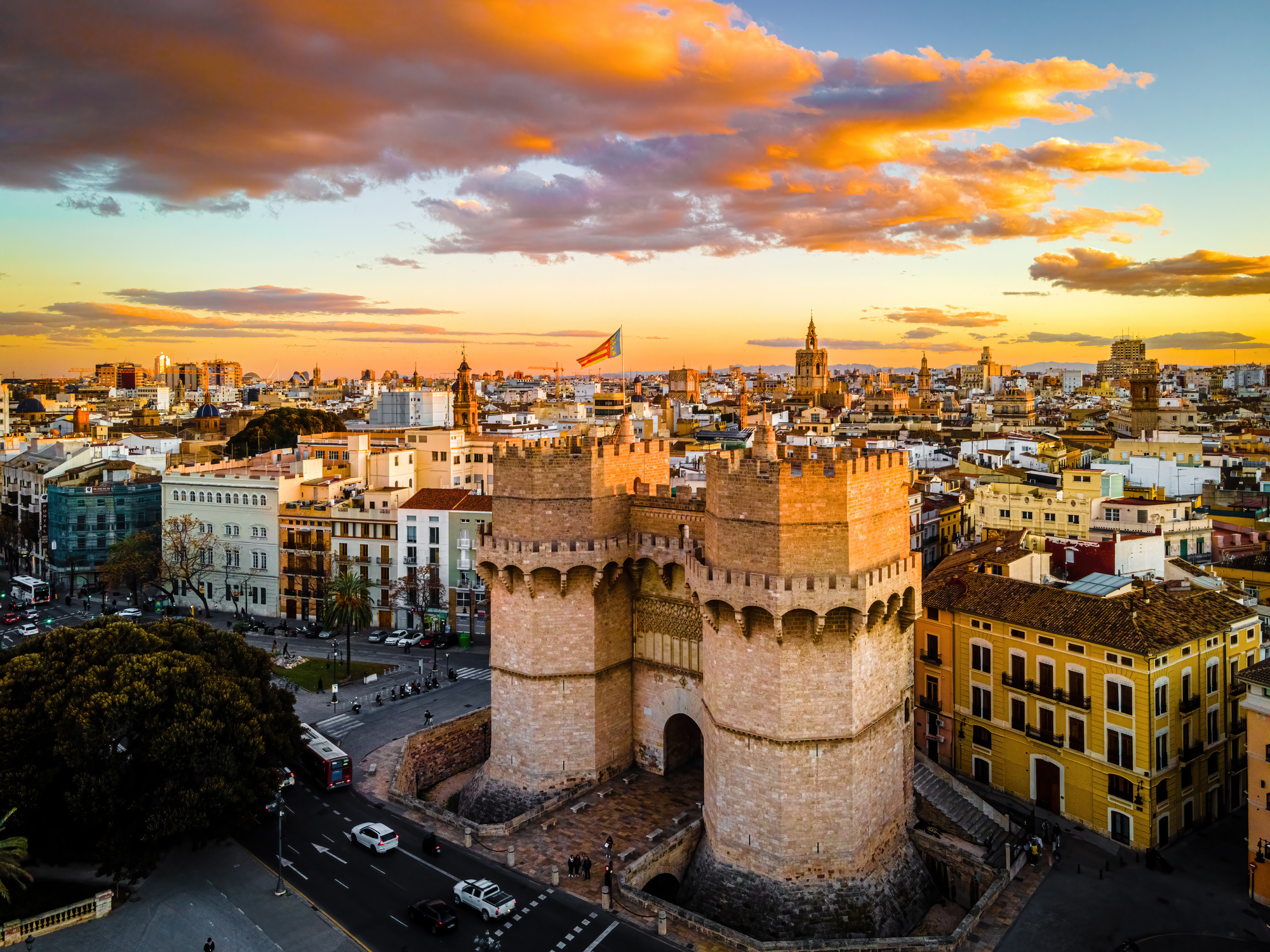 Day 17: 10:00-20:00
Day 17: 10:00-20:00Valencia / Spain
-
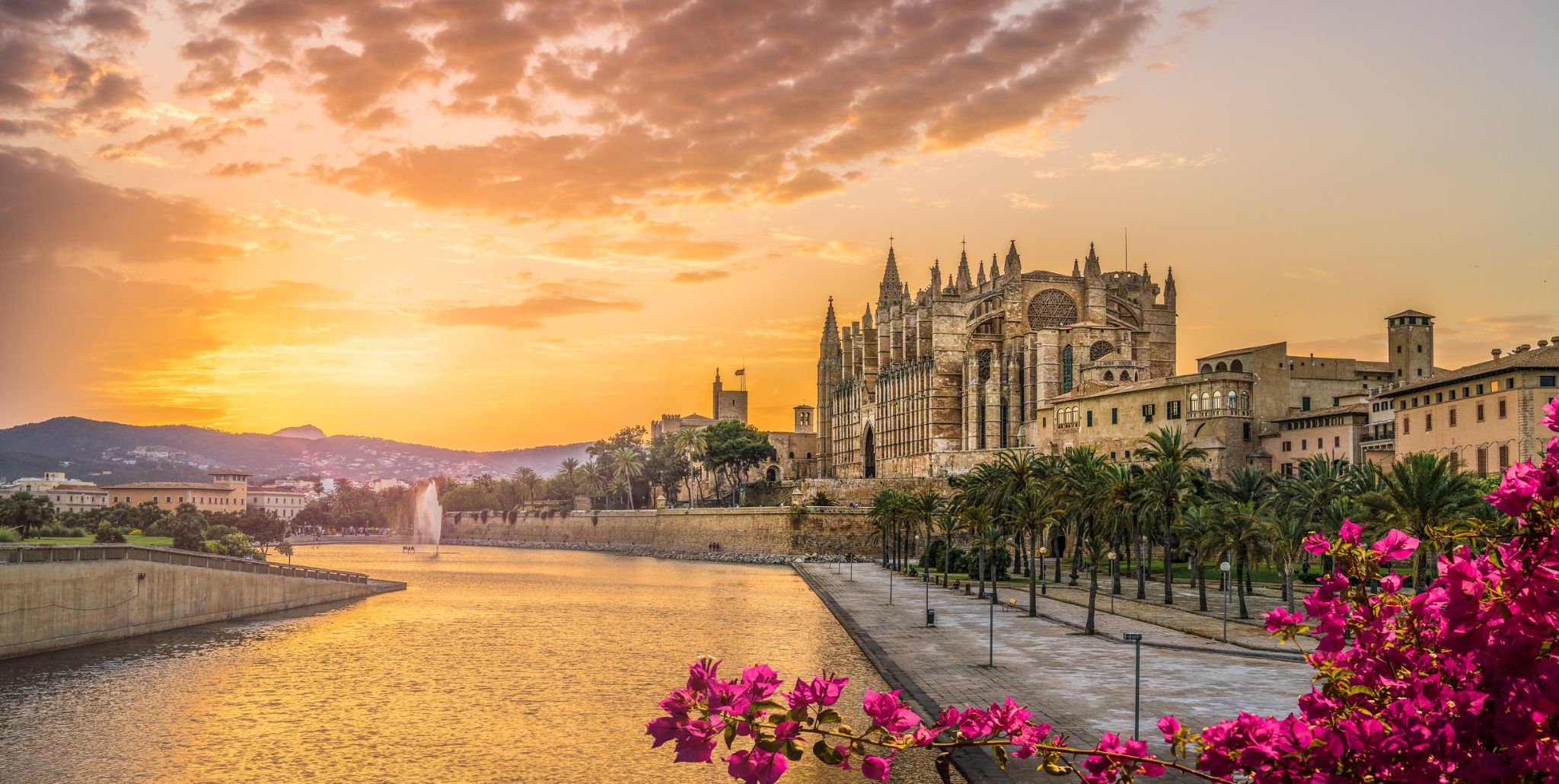 Day 18: 09:00-18:00
Day 18: 09:00-18:00Palma de Mallorca / Spain
Mallorca is the largest island in the Balearic Islands, which are part of Spain and located in the Mediterranean. The native language, as on the rest of the Balearic Islands, is Catalan, which is co-official with Spanish.
The capital of the island, Palma, is also the capital of the autonomous community of the Balearic Islands. The Balearic Islands have been an autonomous region of Spain since 1983. There are two small islands off the coast of Mallorca: Cabrera (southeast of Palma) and Dragonera (west of Palma). The anthem of Mallorca is "La Balanguera".
Like the other Balearic Islands of Menorca, Ibiza and Formentera, the island is an extremely popular holiday destination, particularly for tourists from Germany and the United Kingdom. The international airport, Palma de Mallorca Airport, is one of the busiest in Spain; it was used by 28.0 million passengers in 2017, increasing every year since 2012.
The name derives from Classical Latin insula maior, "larger island". Later, in Medieval Latin, this became Maiorica, "the larger one", in comparison to Menorca, "the smaller one".
-
 Day 19:
Day 19:Day at sea / Sea
-
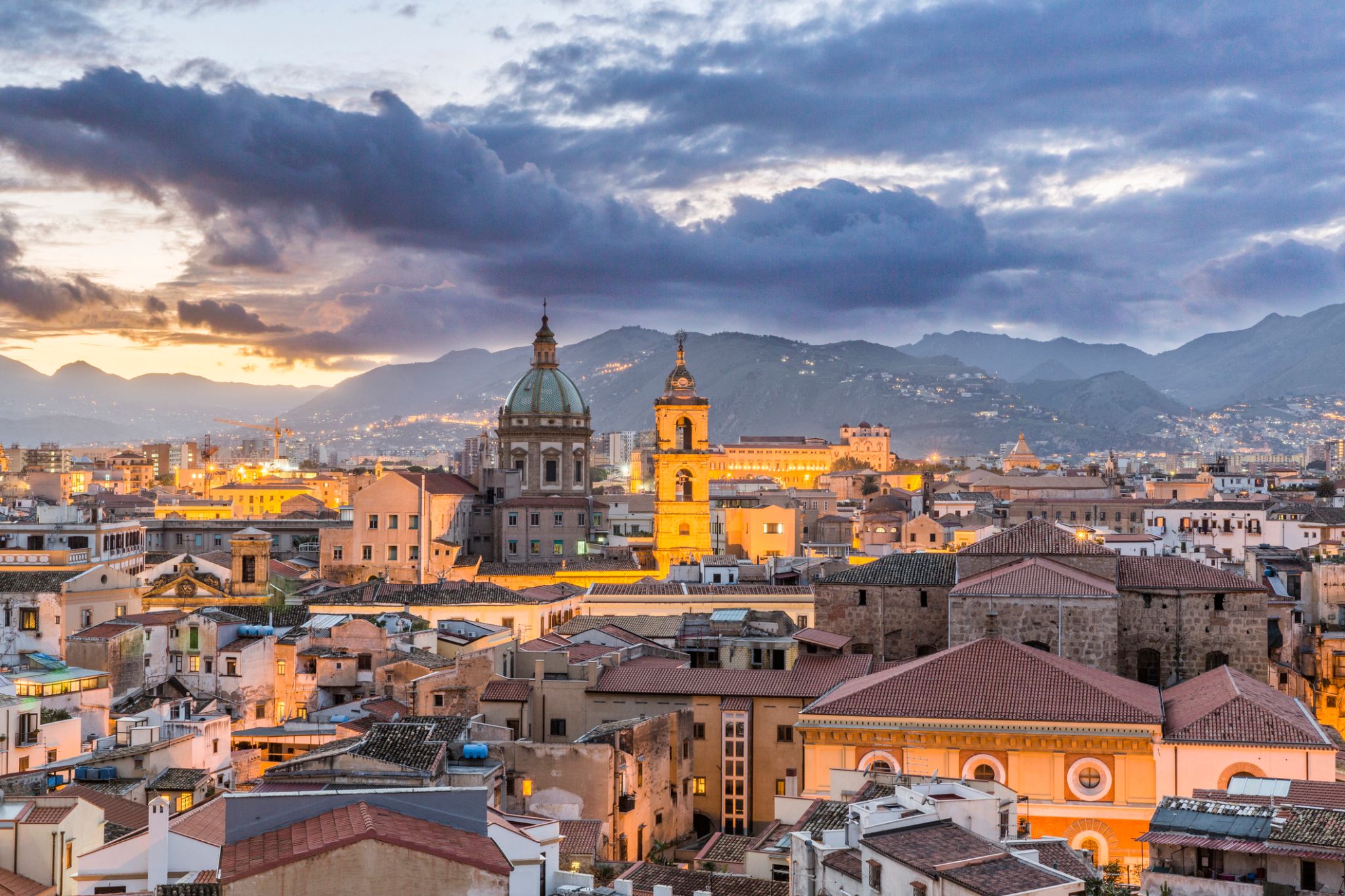 Day 20: 08:00-18:00
Day 20: 08:00-18:00Sicily Palermo / Italy
Sicily is the largest island in the Mediterranean Sea and one of the 20 regions of Italy. It is one of the five Italian autonomous regions, in Southern Italy along with surrounding minor islands, officially referred to as Regione Siciliana.
Sicily is located in the central Mediterranean Sea, south of the Italian Peninsula, from which it is separated by the narrow Strait of Messina. Its most prominent landmark is Mount Etna, the tallest active volcano in Europe, and one of the most active in the world, currently 3,329 m (10,922 ft) high. The island has a typical Mediterranean climate.
The earliest archaeological evidence of human activity on the island dates from as early as 12,000 BC. By around 750 BC, Sicily had three Phoenician and a dozen Greek colonies and, for the next 600 years, it was the site of the Sicilian Wars and the Punic Wars. After the fall of the Roman Empire in the 5th century AD, Sicily was ruled during the Early Middle Ages by the Vandals, the Ostrogoths, the Byzantine Empire, and the Emirate of Sicily. The Norman conquest of southern Italy led to the creation of the Kingdom of Sicily, which was subsequently ruled by the Hohenstaufen, the Capetian House of Anjou, Spain, and the House of Habsburg. It was finally unified under the House of Bourbon with the Kingdom of Naples as the Kingdom of the Two Sicilies. It became part of Italy in 1860 following the Expedition of the Thousand, a revolt led by Giuseppe Garibaldi during the Italian unification, and a plebiscite. Sicily was given special status as an autonomous region on 15th May 1946, 18 days before the Italian constitutional referendum of 1946. Albeit, much of the autonomy still remains unapplied, especially financial autonomy, because the autonomy-activating laws have been deferred to be approved by the parithetic committee (50% Italian State, 50% Regione Siciliana), since 1946.
Sicily has a rich and unique culture, especially with regard to the arts, music, literature, cuisine, and architecture. It is also home to important archaeological and ancient sites, such as the Necropolis of Pantalica, the Valley of the Temples, Erice and Selinunte.
-
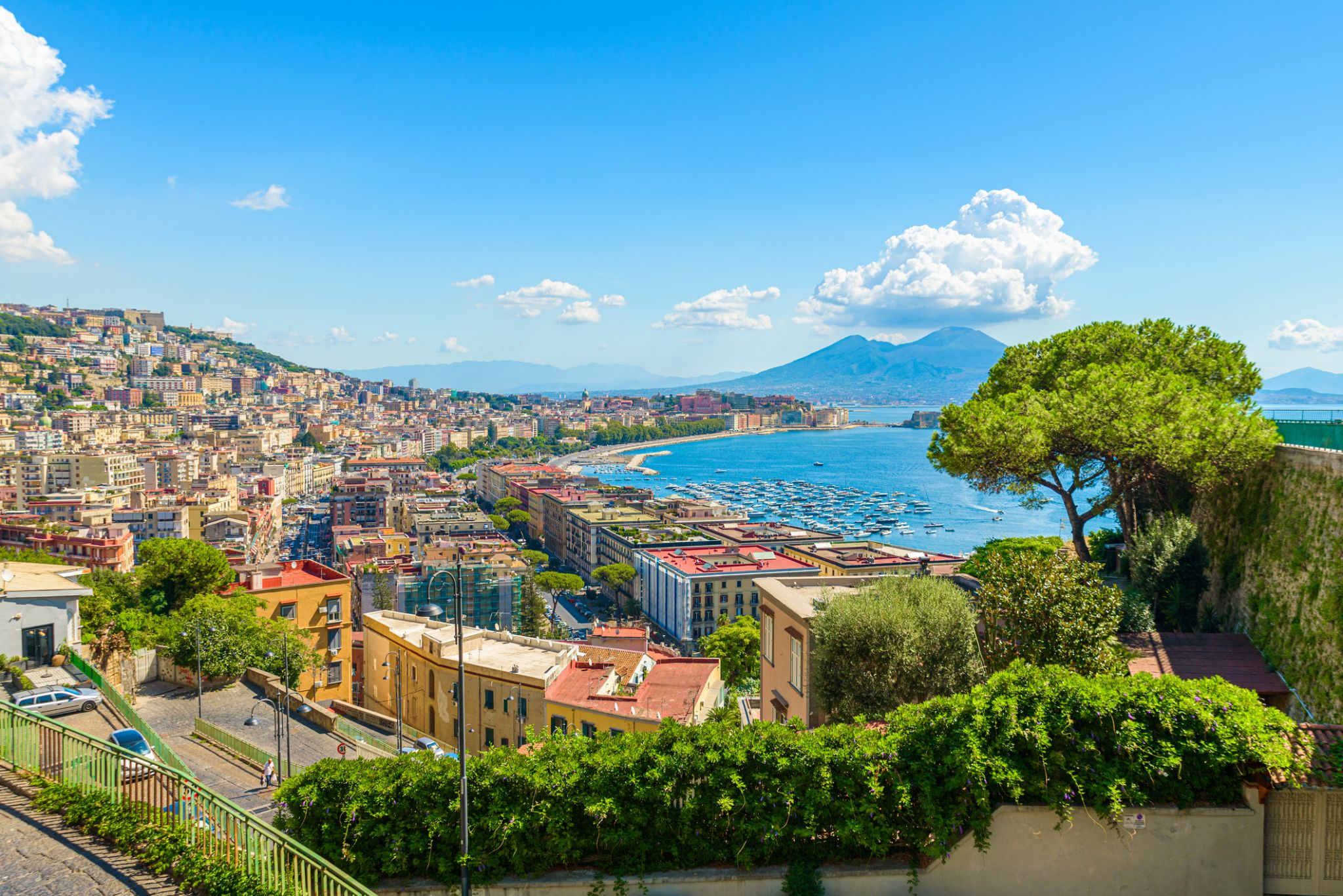 Day 21: 06:30
Day 21: 06:30Naples / Italy
Naples is the regional capital of Campania and the third-largest municipality in Italyafter Rome and Milan. In 2017, around 967,069 people lived within the city's administrative limits while its province-level municipality has a population of 3,115,320 residents. Its continuously built-up metropolitan area (that stretches beyond the boundaries of the Metropolitan City of Naples) is the second or third largest metropolitan area in Italy and one of the most densely populated cities in Europe.
First settled by Greeks in the second millennium BC, Naples is one of the oldest continuously inhabited urban areas in the world. In the ninth century BC, a colony known as Parthenope or Παρθενόπη was established on the Island of Megaride, later refounded as Neápolis in the sixth century BC. The city was an important part of Magna Graecia, played a major role in the merging of Greek and Roman society and a significant cultural centre under the Romans. It served as the capital of the Duchy of Naples (661–1139), then of the Kingdom of Naples (1282–1816) and finally of the Two Sicilies until the unification of Italy in 1861.
Between 1925 and 1936, Naples was expanded and upgraded by Benito Mussolini's government but subsequently sustained severe damage from Allied bombing during World War II, which led to extensive post-1945 reconstruction work. Naples has experienced significant economic growth in recent decades, helped by the construction of the Centro Direzionale business district and an advanced transportation network, which includes the Alta Velocità high-speed rail link to Rome and Salerno and an expanded subway network. Naples is the third-largest urban economy in Italy, after Milan and Rome. The Port of Naples is one of the most important in Europe and home of the Allied Joint Force Command Naples, the NATO body that oversees North Africa, the Sahel and Middle East.
Naples' historic city centre is the largest in Europe and a UNESCO World Heritage Site, with a wide range of culturally and historically significant sites nearby, including the Palace of Caserta and the Roman ruins of Pompeii and Herculaneum. Naples is also known for its natural beauties such as Posillipo, Phlegraean Fields, Nisida, and Vesuvius.
Neapolitan cuisine is synonymous with pizza – which originated in the city – but it also includes many lesser-known dishes; Naples has the greatest number of accredited stars from the Michelin Guide of any Italian city.
The best-known sports team in Naples is the Serie A club S.S.C. Napoli, two-time Italian champions who play at the San Paolo Stadium in the southwest of the city, in the Fuorigrotta quarter.

